Imagine two weeks on a Russian polar research vessel cruising through a tropical paradise! It’s a tough life, but someone has to live it.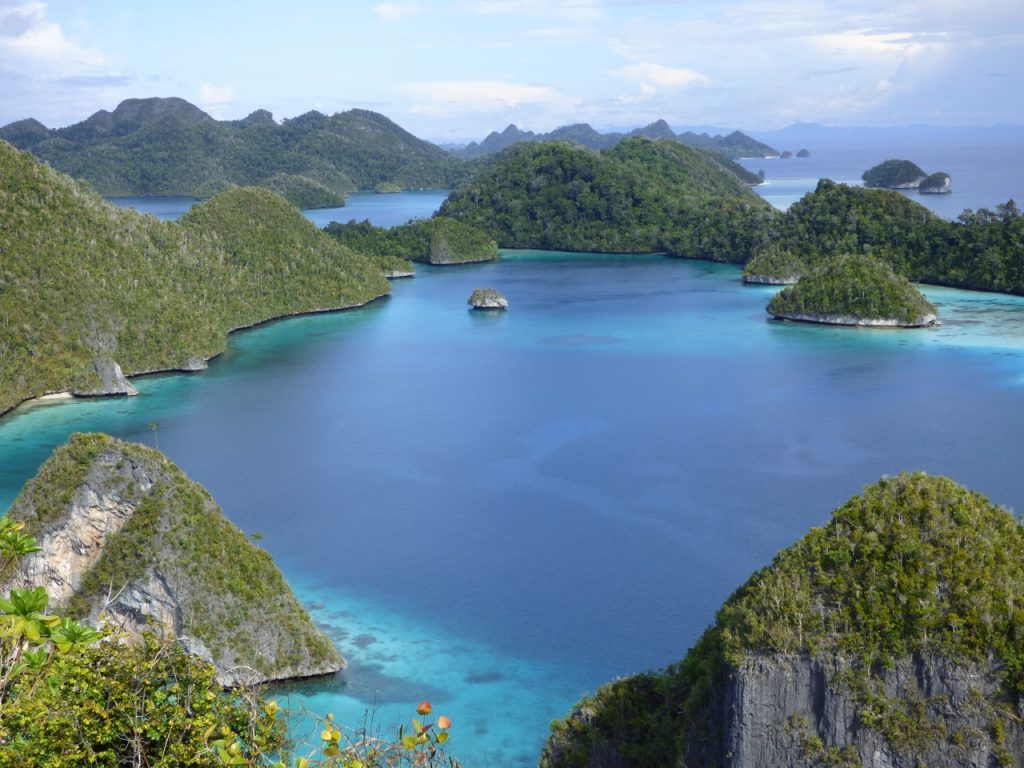
I just finished this trip, a two week adventure cruise through some of the most beautiful tropical scenery in the world. The trip, The Indonesian Explorer, was run by Heritage Expeditions, the company that hosted me on the same ship three years ago (and on this trip, as well) to see whales, walruses and polar bears in the Russian Far East. They decided to utilize the ship, The Sprit of Enderby (or as the Russians call it, The Professor Khromov), all year round by bringing it south during the long Arctic winter.
My bottom line impression is this region is the personification of what we mean when we talk about a “tropical paradise.” This was especially apparent during the first few days as we cruised through the region known as Raja Ampat. Raja Ampat refers to the more than 1500 islands near the eastern edge of Indonesia. This collection of steep, jungle-covered islands is one of the most biologically diverse regions on earth and is, according to the Lonely Planet Guide, “without question one of the most beautiful island chains in the world.” I couldn’t agree more.
It was an active trip. At least 2 or 3 times each day we either hiked, birded, snorkeled, swam off pristine white sand beaches, visited local villages, cruised around in a Zodiac for a closer look at the islands, or, get this, swam with whale sharks. Yes, whale sharks! One of my favorite all time wildlife experiences, even rivaling hanging out with the mountain gorillas in Uganda.
Below are some of my favorite photos from that trip. Following that, I have a few comments on how perspective, activity and context can make the difference between a “tropical paradise” and a “tropical hell.”
First, the ship and my cabin, not luxurious, but quite comfortable:
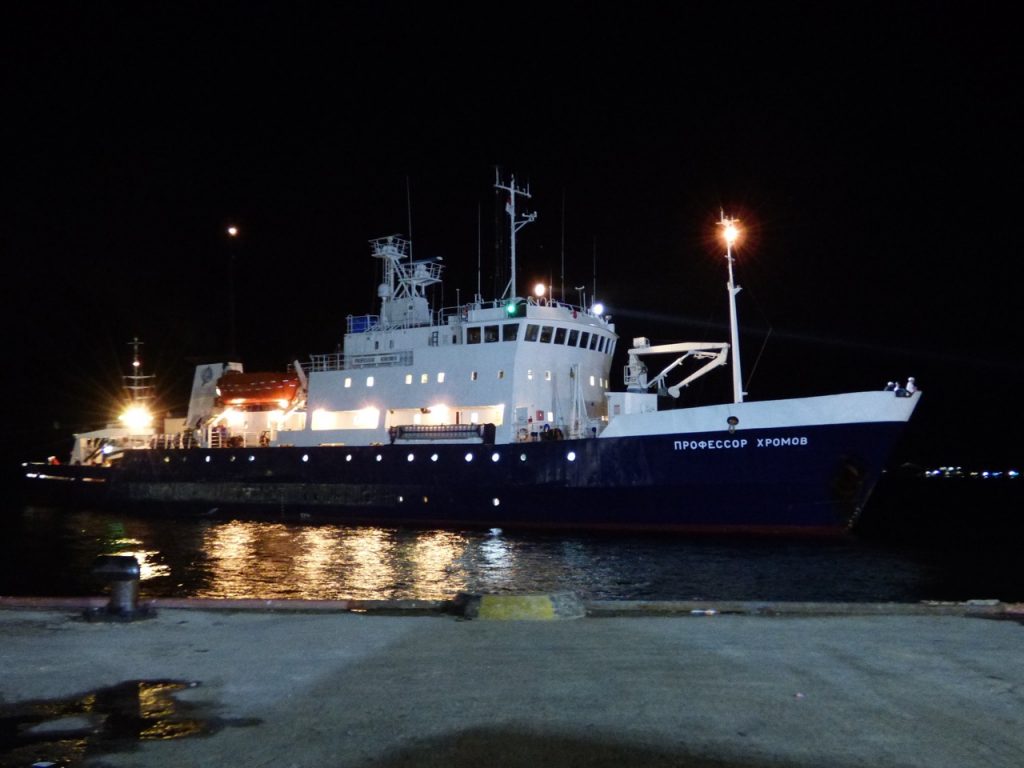
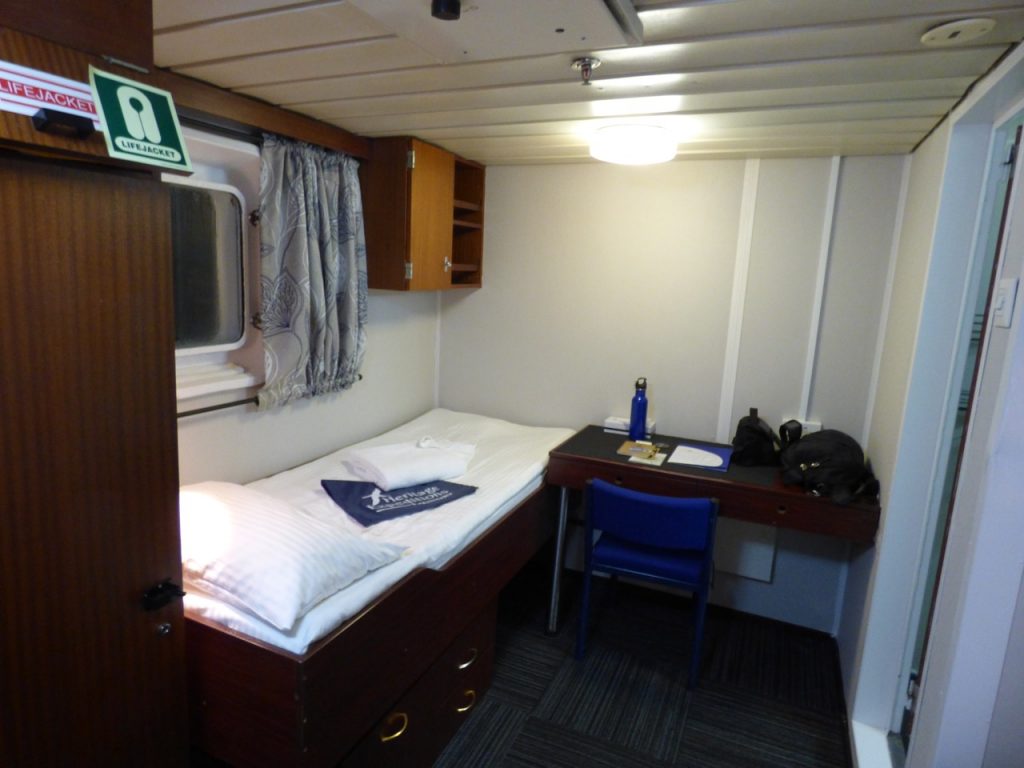 The most important element for me was the scenery. Some of it was viewed from the ship and some from the Zodiac, but the best in my opinion were at the end of hikes to view points. The first photo is of the steps leading up to a platform overlooking Love Lake, the second photo is of the ‘lake.” It is not actually a lake, but adjoining bays that look like a heart when viewed from above.
The most important element for me was the scenery. Some of it was viewed from the ship and some from the Zodiac, but the best in my opinion were at the end of hikes to view points. The first photo is of the steps leading up to a platform overlooking Love Lake, the second photo is of the ‘lake.” It is not actually a lake, but adjoining bays that look like a heart when viewed from above.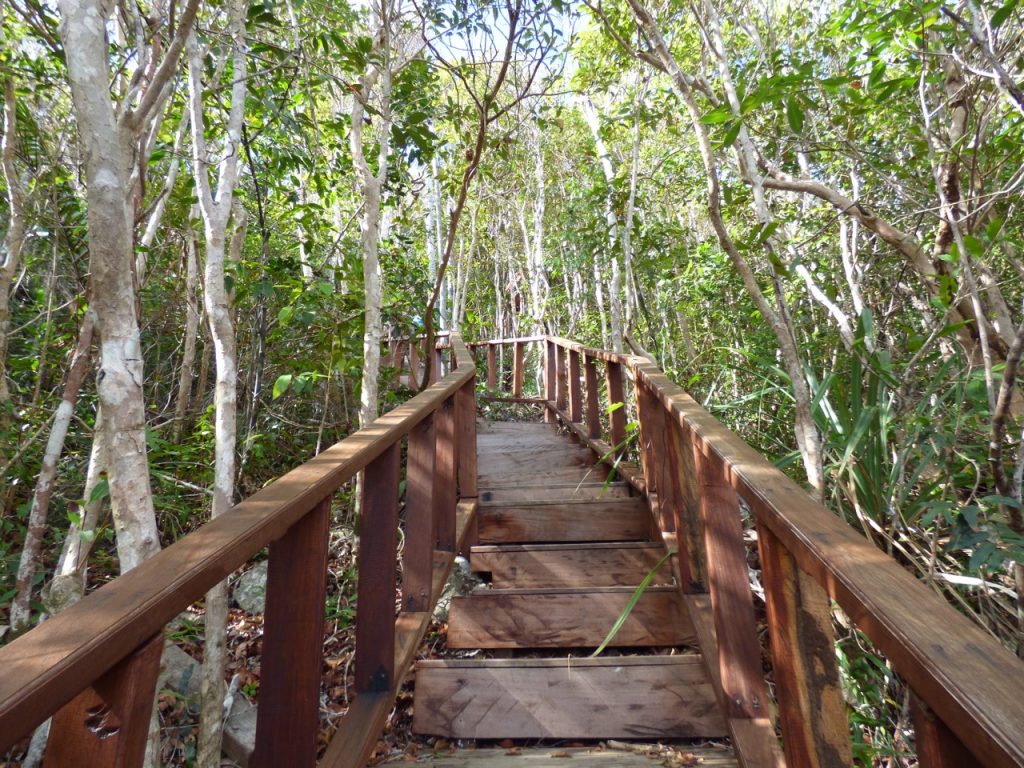
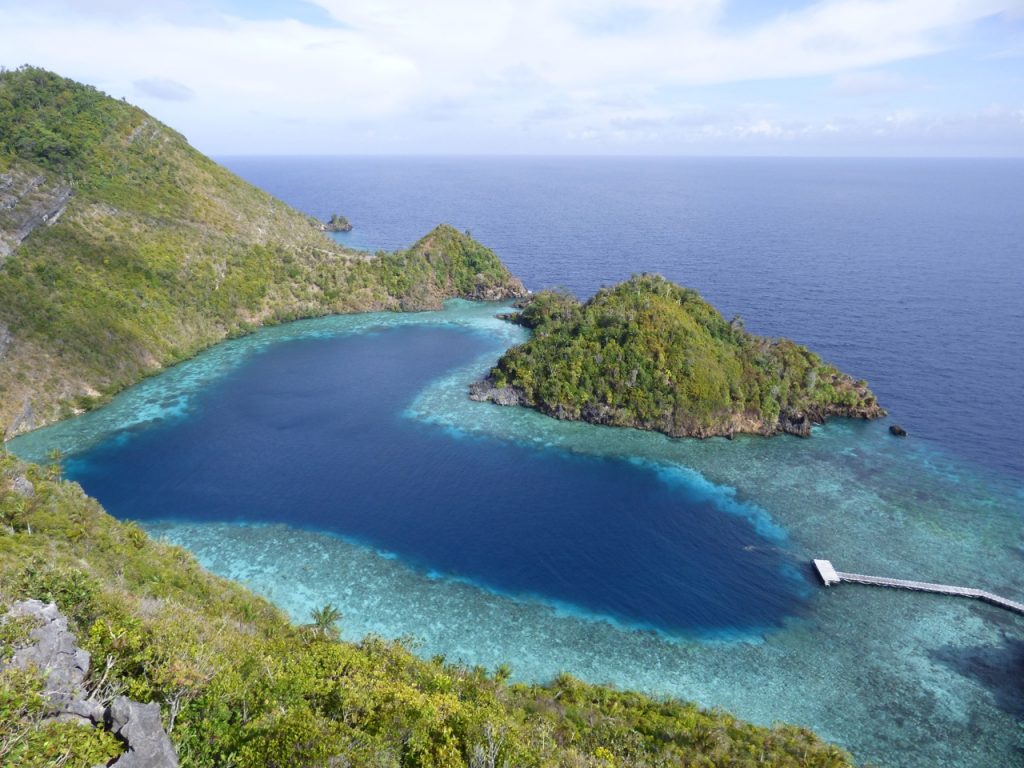 The best view required an extraordinarily steep, rough climb, over sharp volcanic rocks. To get to the top I had to pull myself up the almost vertical incline using roots, strong branches, and thin tree trunks, plus a rope for the last 10 yards or so.
The best view required an extraordinarily steep, rough climb, over sharp volcanic rocks. To get to the top I had to pull myself up the almost vertical incline using roots, strong branches, and thin tree trunks, plus a rope for the last 10 yards or so.
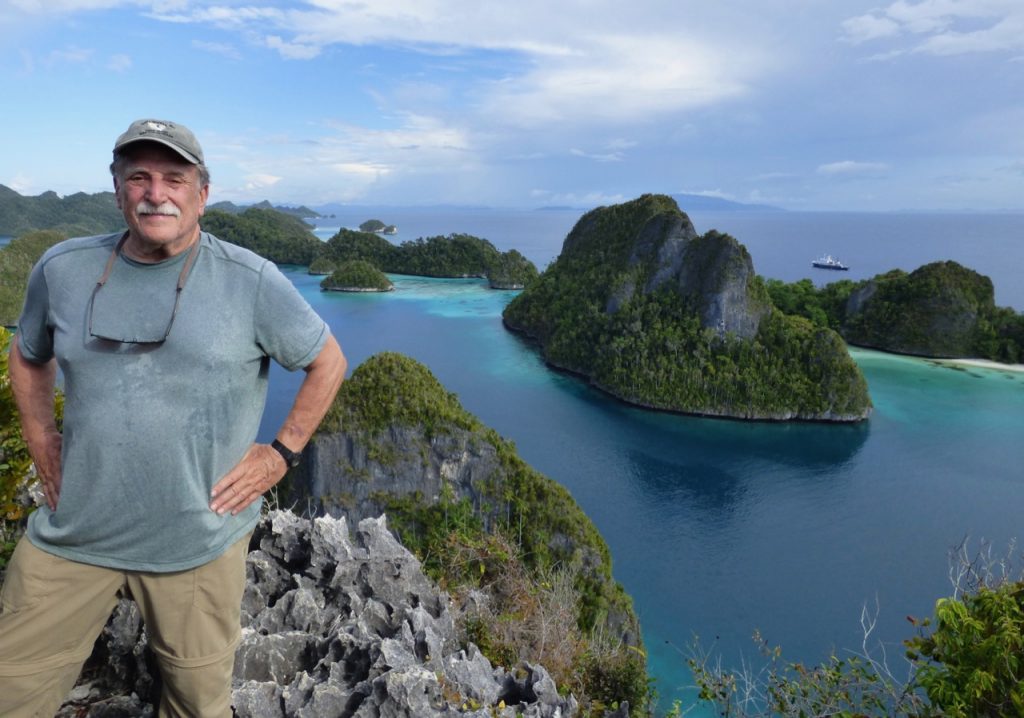 As you can see I was pretty sweaty by the time I reached the top. I think that the view is worthy of a Raja Ampat poster. In fact I think I have seen it on one, or at least in a brochure or online in descriptions of the area.
As you can see I was pretty sweaty by the time I reached the top. I think that the view is worthy of a Raja Ampat poster. In fact I think I have seen it on one, or at least in a brochure or online in descriptions of the area.
The climb down was particularly hairy, especially given the limited range in my left knee which was replaced almost three years ago. It required serious concentration to get down safely. But it was worth it. I figure that was the best test of my knee yet, and assured me that the Adventure Geezer still has some “adventure” left in his aging body, especially in those football/rugby-ravaged knees.
More scenery:
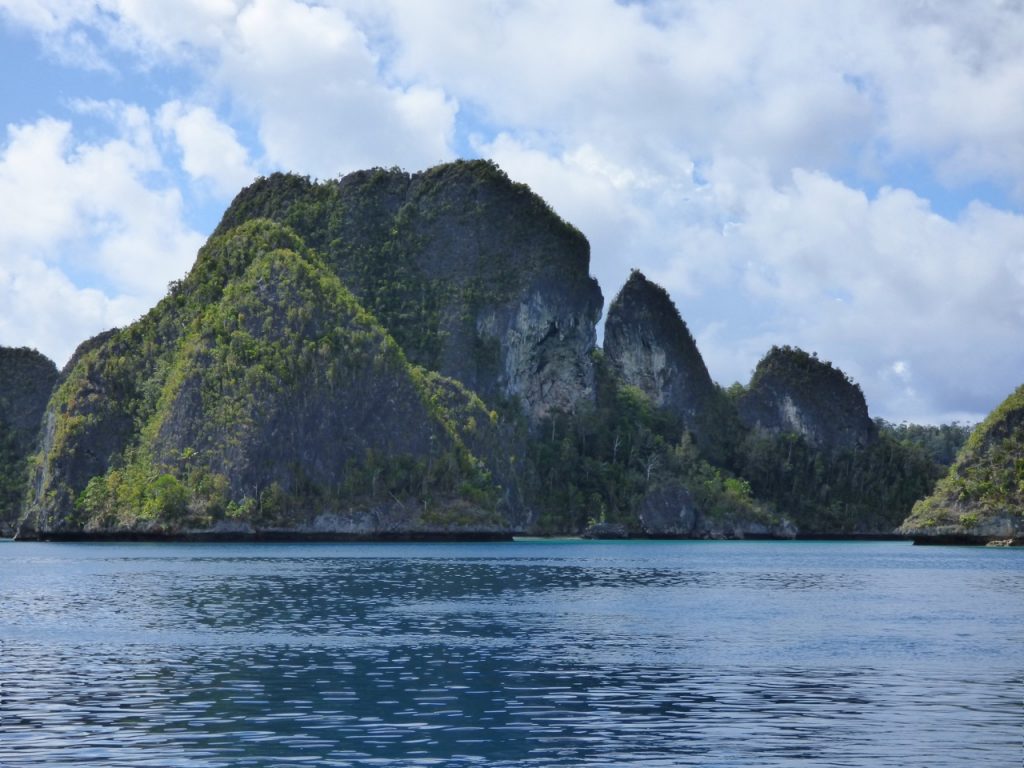

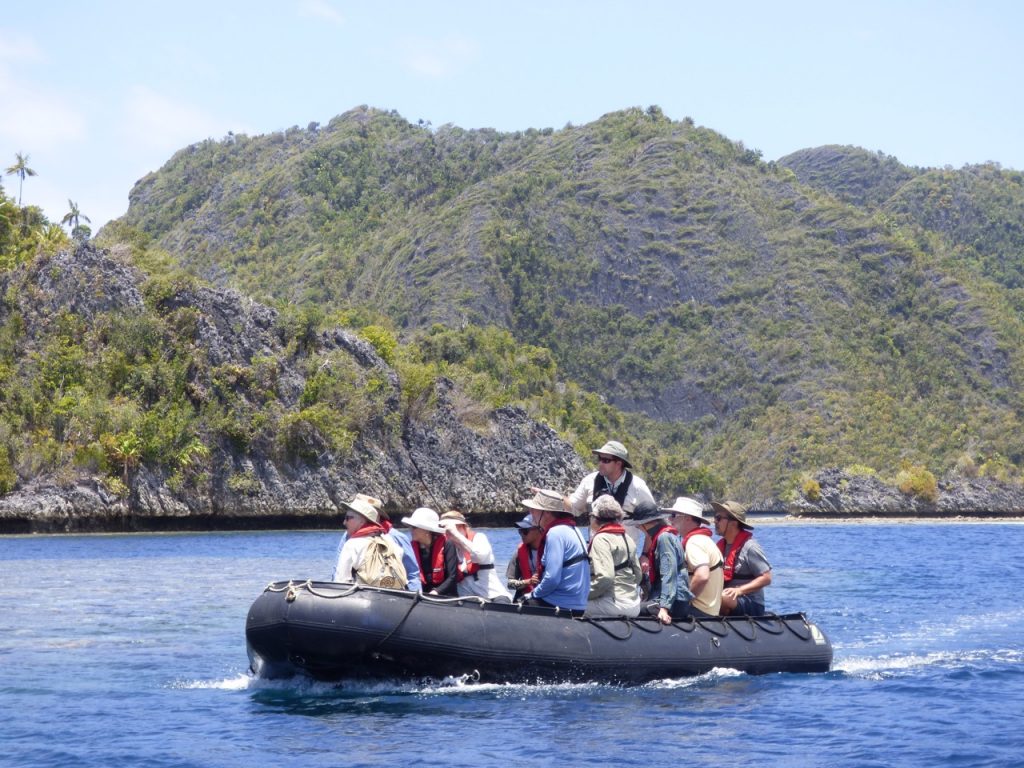
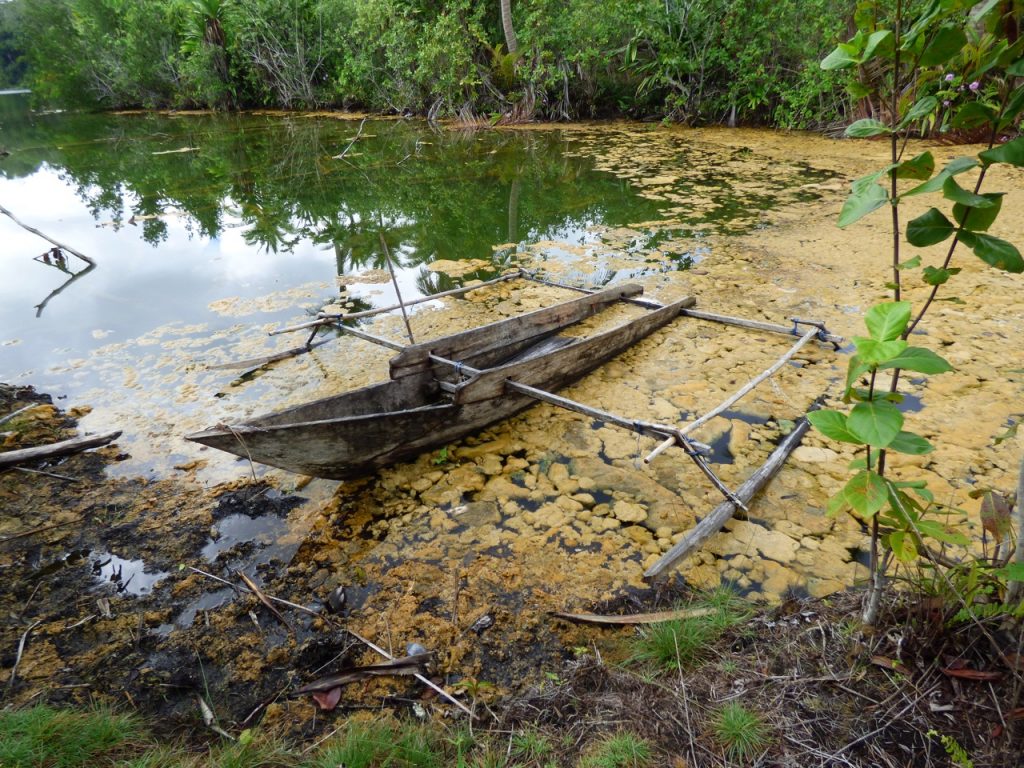
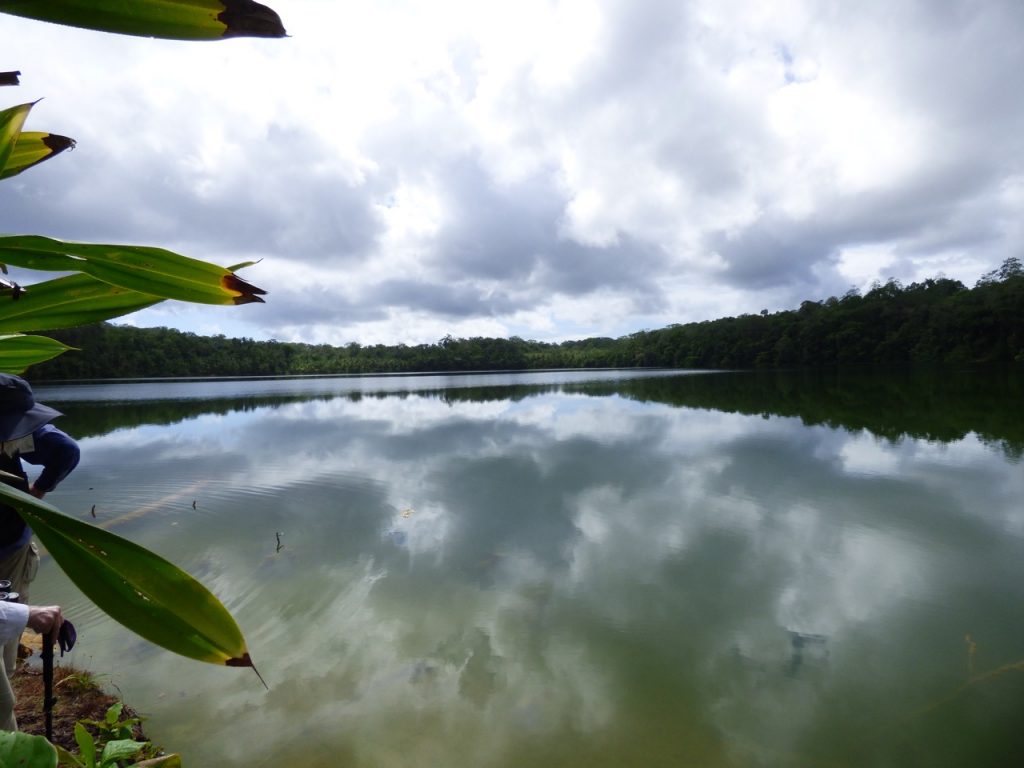 and while I’m at, some stunning sunsets and sunrises:
and while I’m at, some stunning sunsets and sunrises: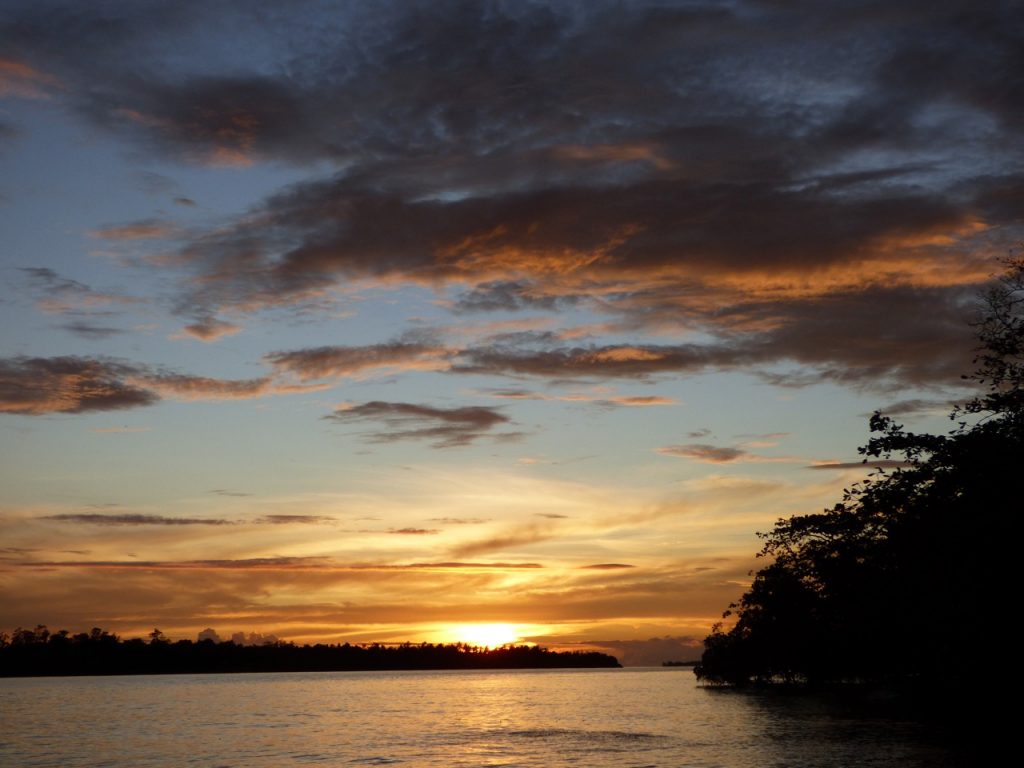
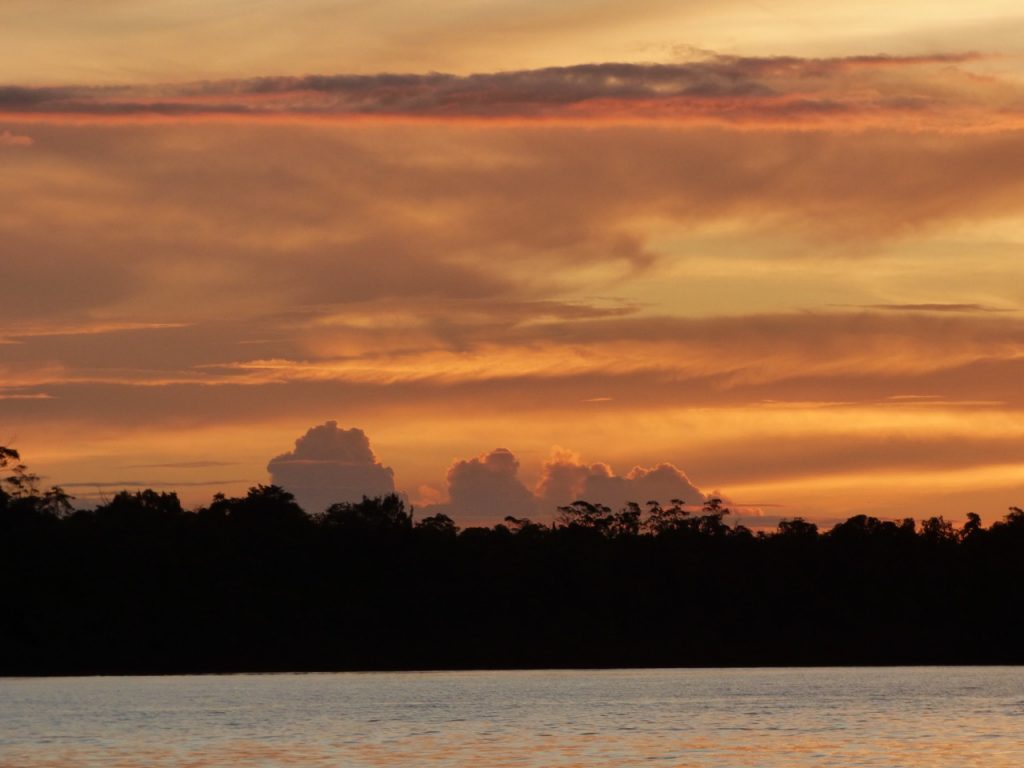

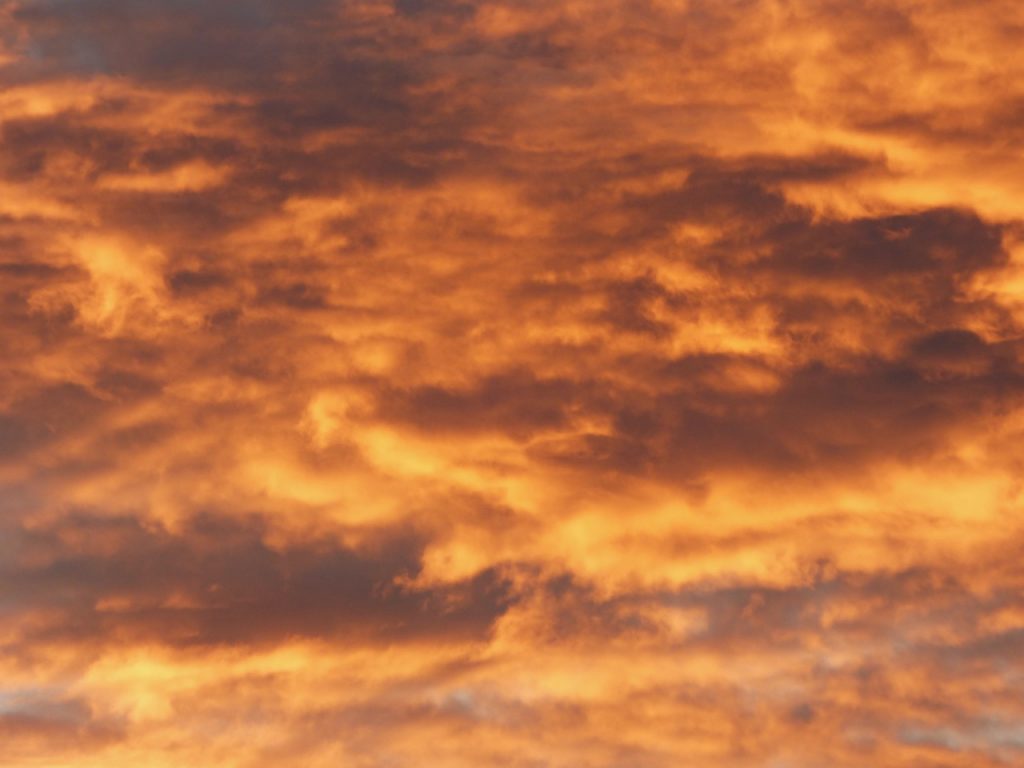
 The snorkeling was great,
The snorkeling was great,


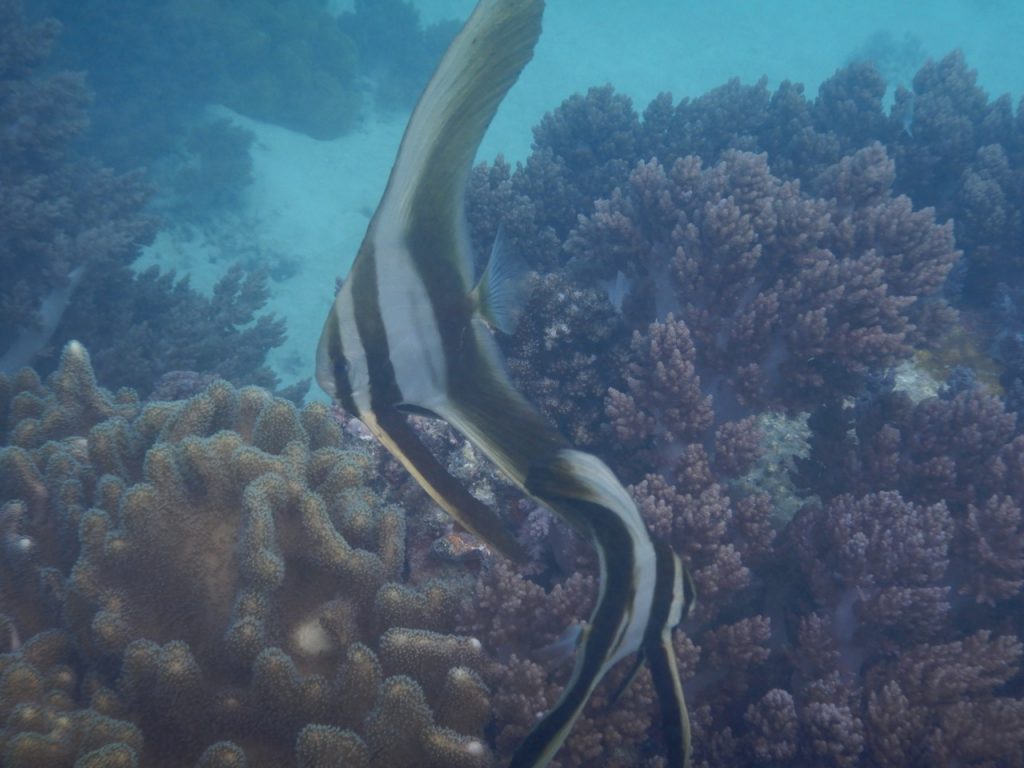
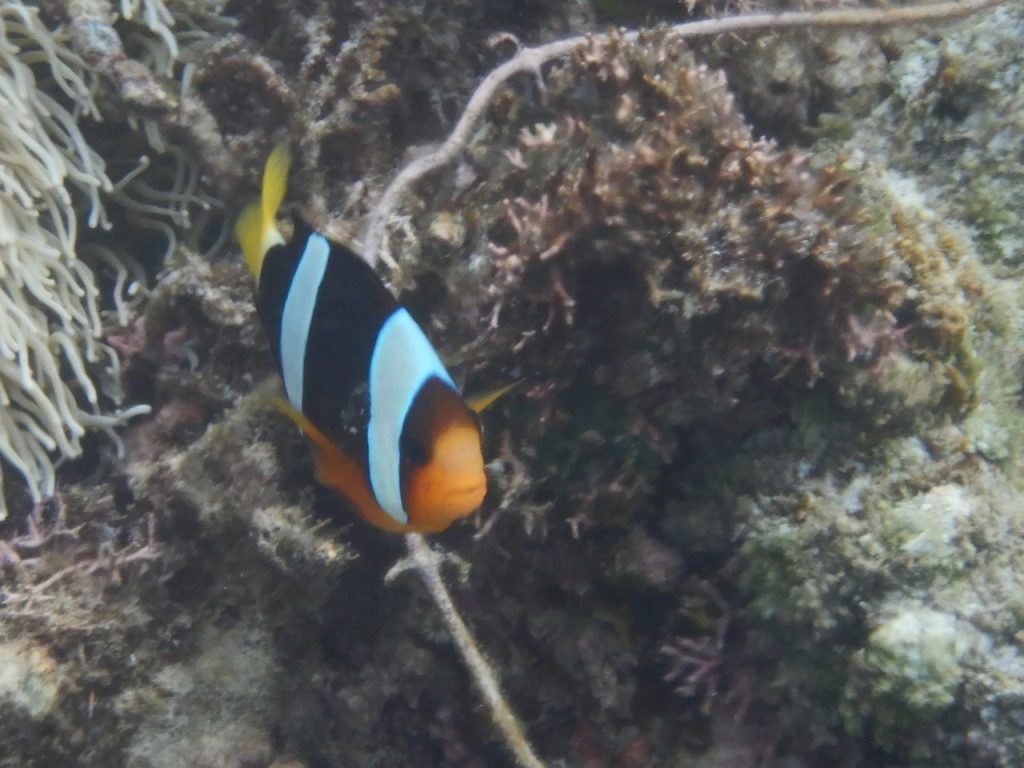

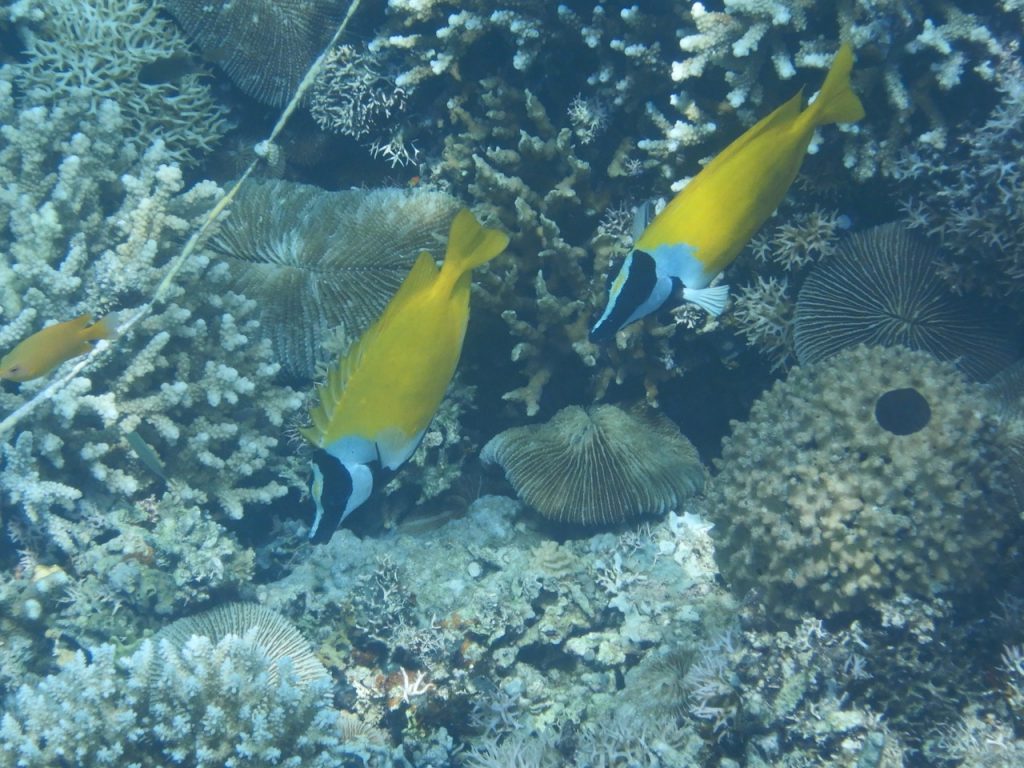

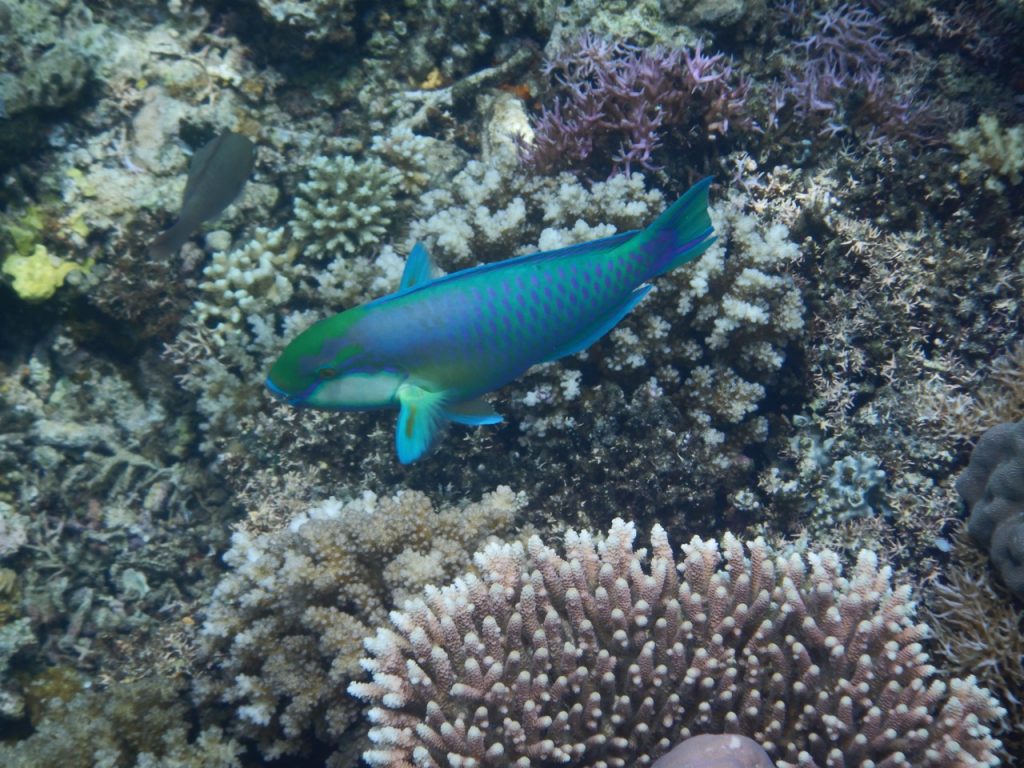

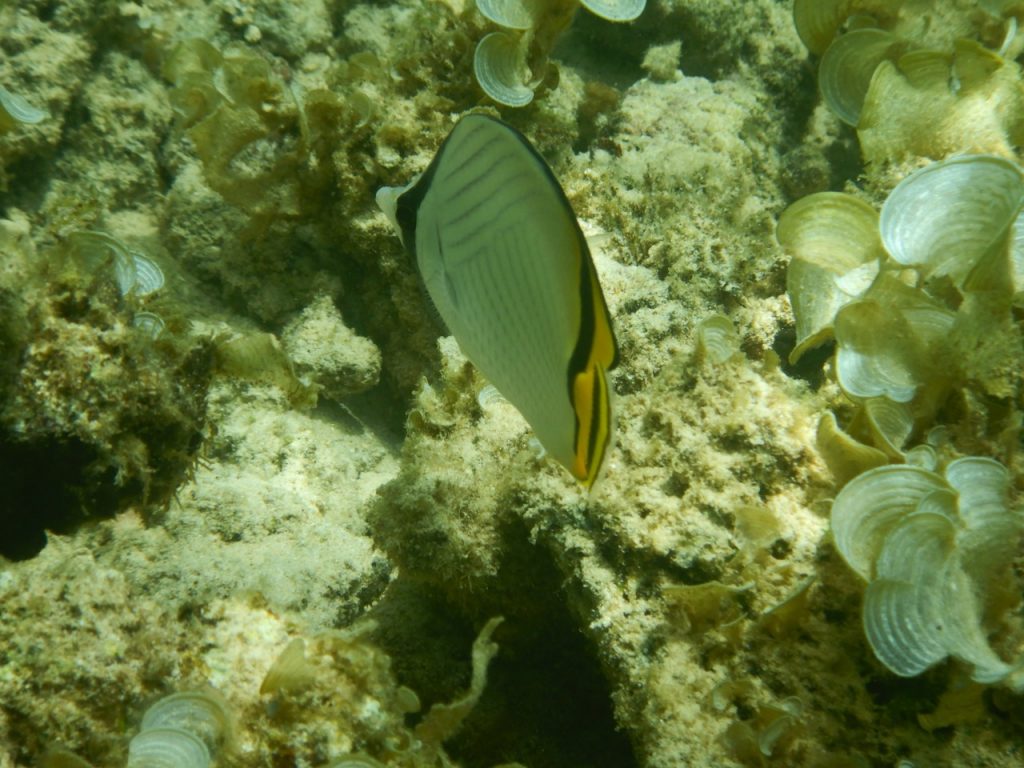
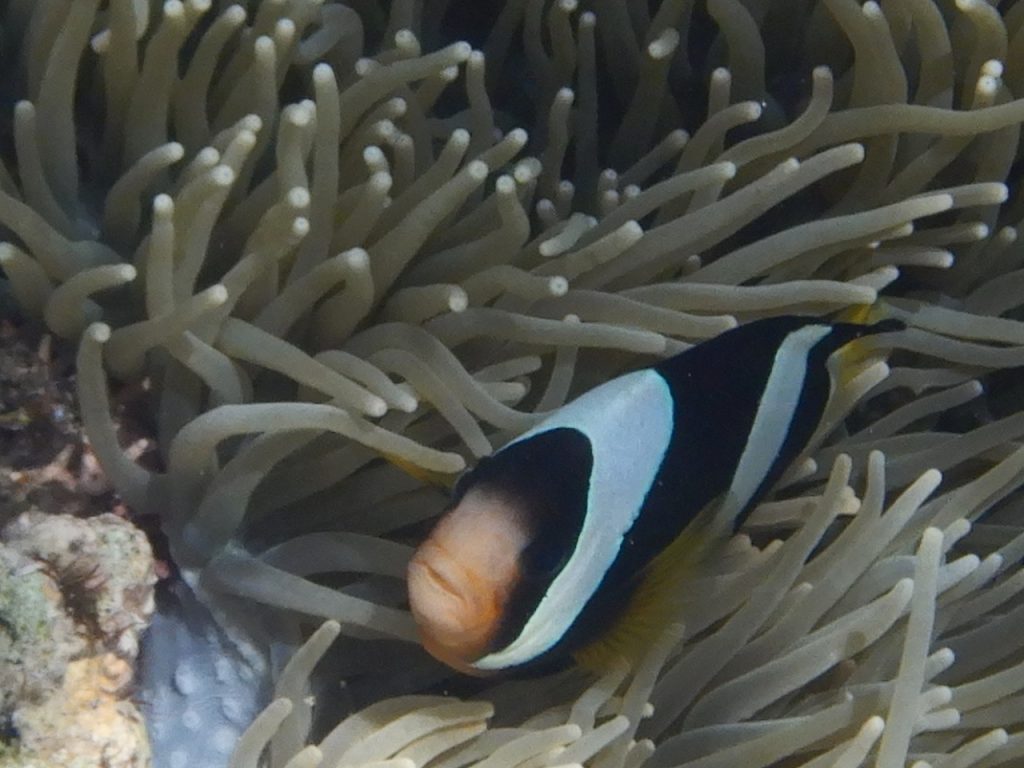
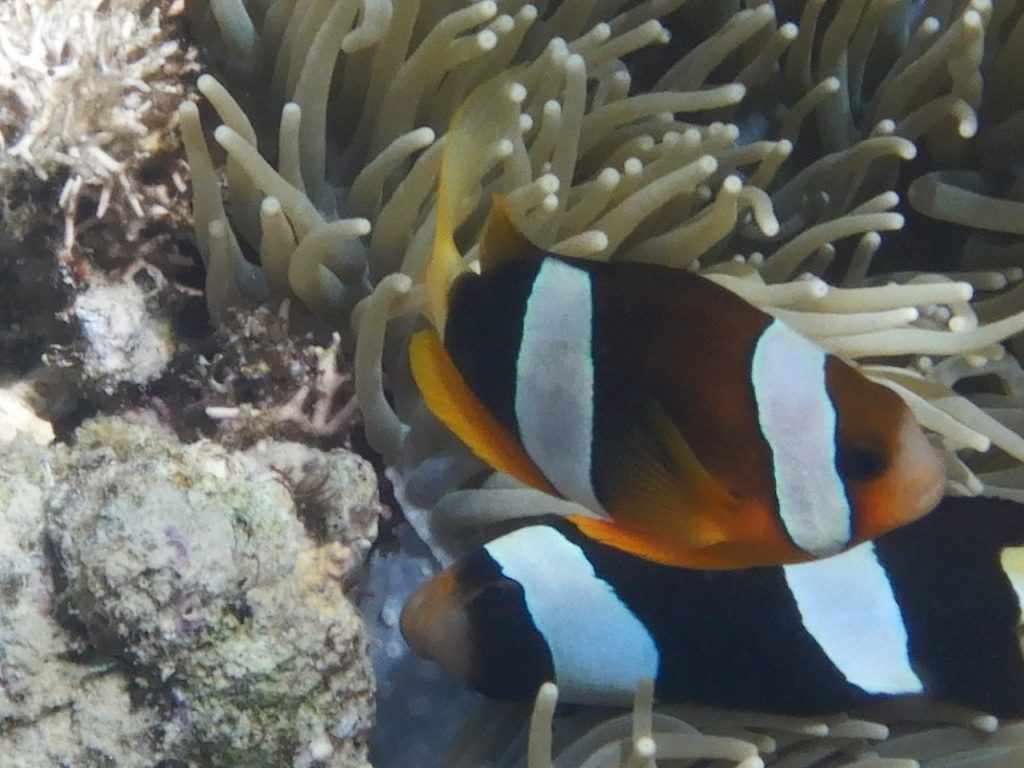

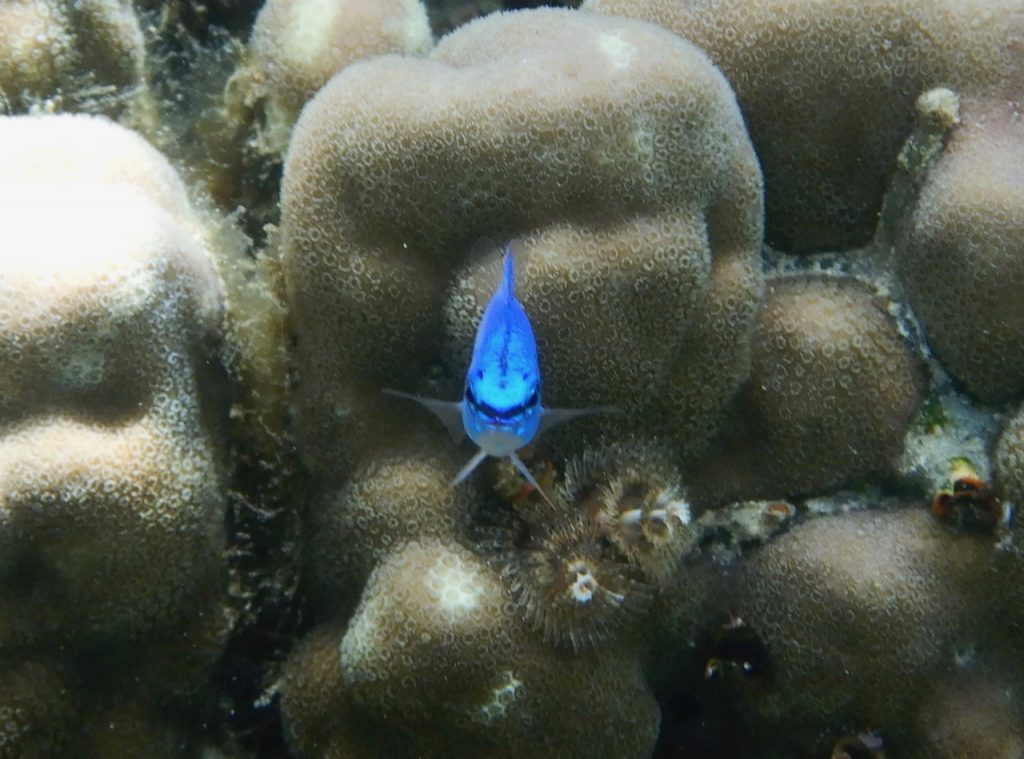 but it was the swimming with the whale sharks that totally blew my mind.
but it was the swimming with the whale sharks that totally blew my mind.

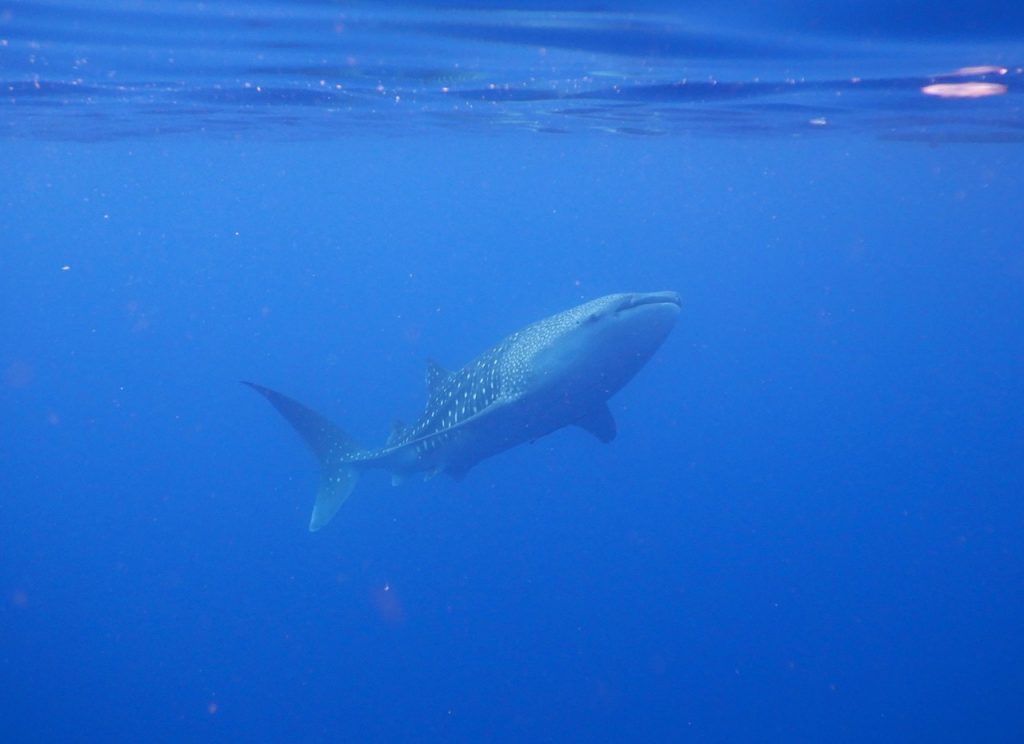
 One came so close, within a couple of feet, that all I could shoot was his (her?) eye and some spots on his (her?) back as he (she) swam by.
One came so close, within a couple of feet, that all I could shoot was his (her?) eye and some spots on his (her?) back as he (she) swam by.
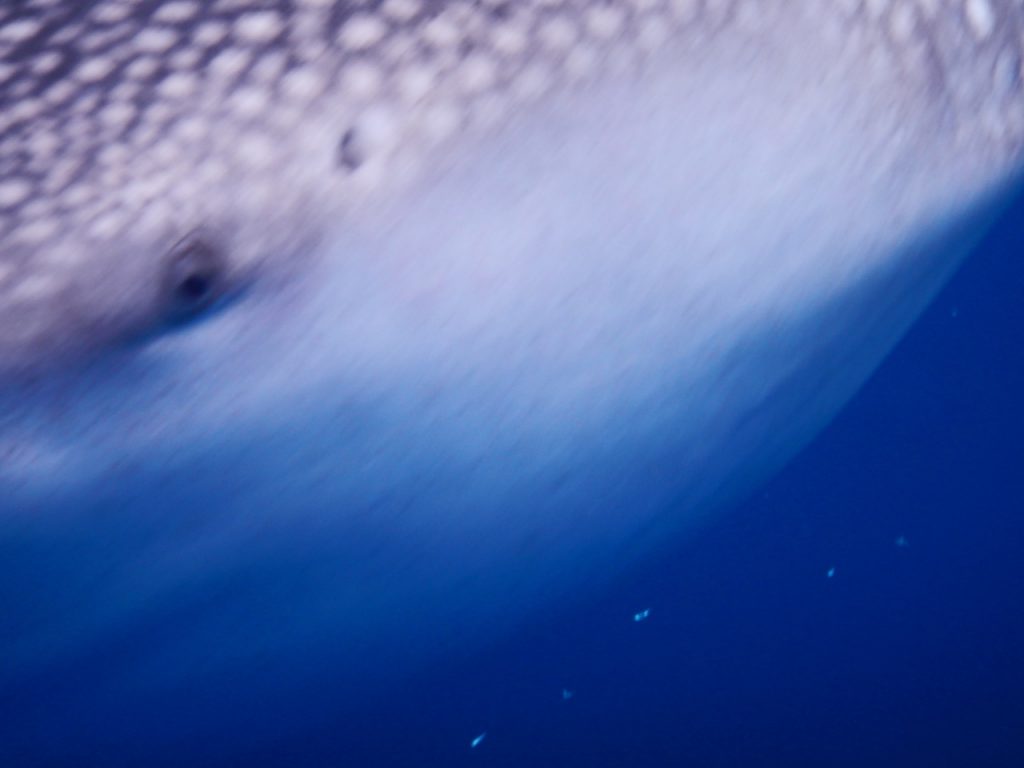
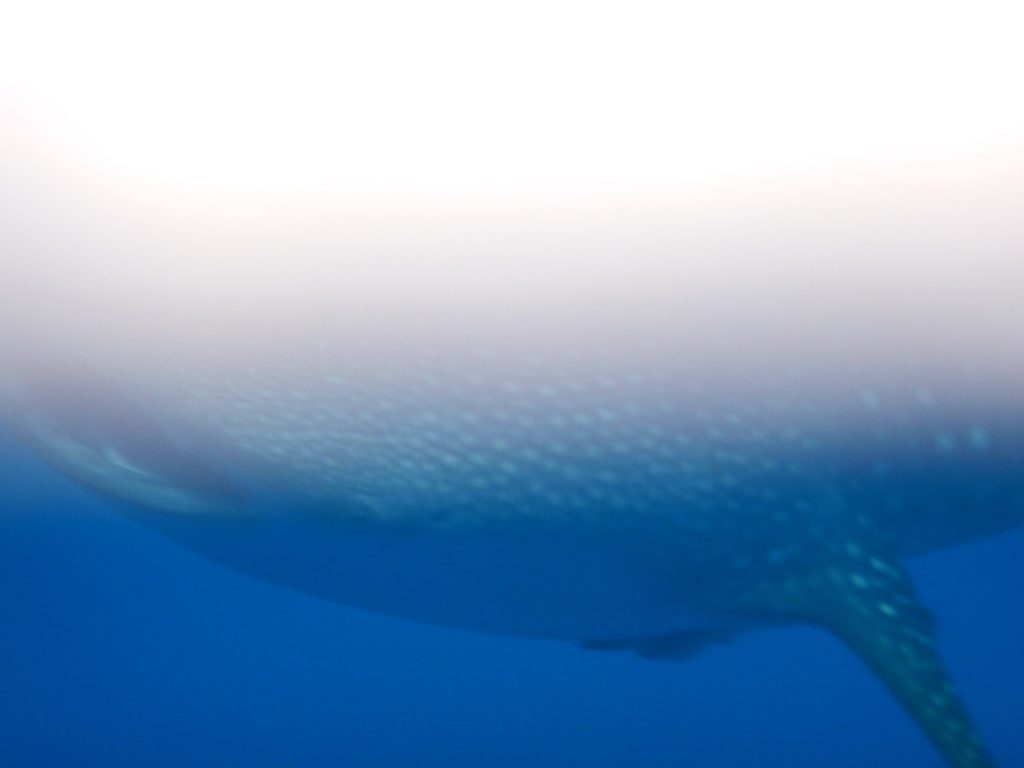 Birding was also a big part of this trip. This usually involved getting up very early, stumbling through the forest in the dark and sitting quietly for many minutes, even hours, in a hide. But the rewards for enduring the early hours and being patient (not one of my strong points) were great as you can see from the photos of the Wilson’s Bird of Paradise below:
Birding was also a big part of this trip. This usually involved getting up very early, stumbling through the forest in the dark and sitting quietly for many minutes, even hours, in a hide. But the rewards for enduring the early hours and being patient (not one of my strong points) were great as you can see from the photos of the Wilson’s Bird of Paradise below:
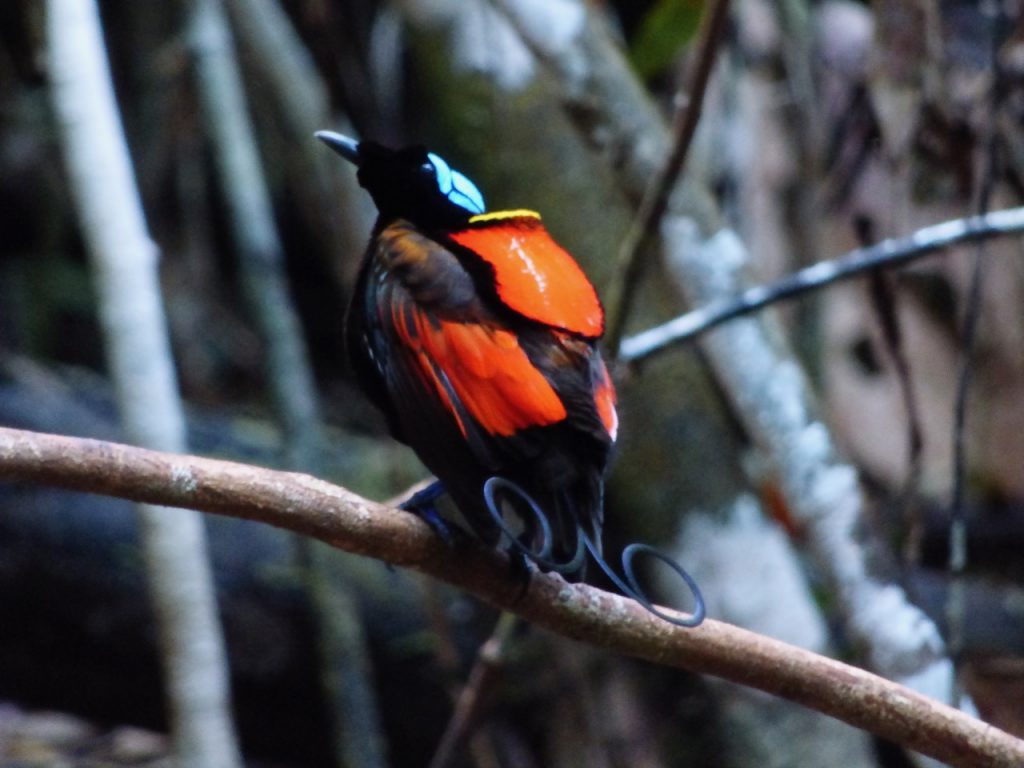

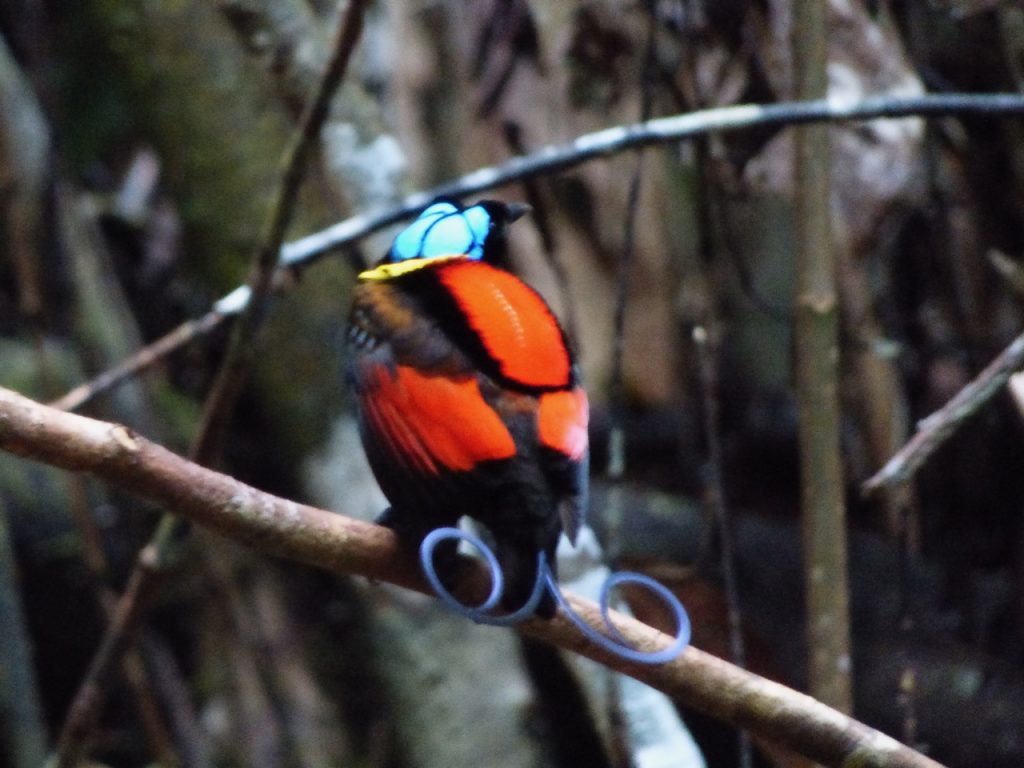
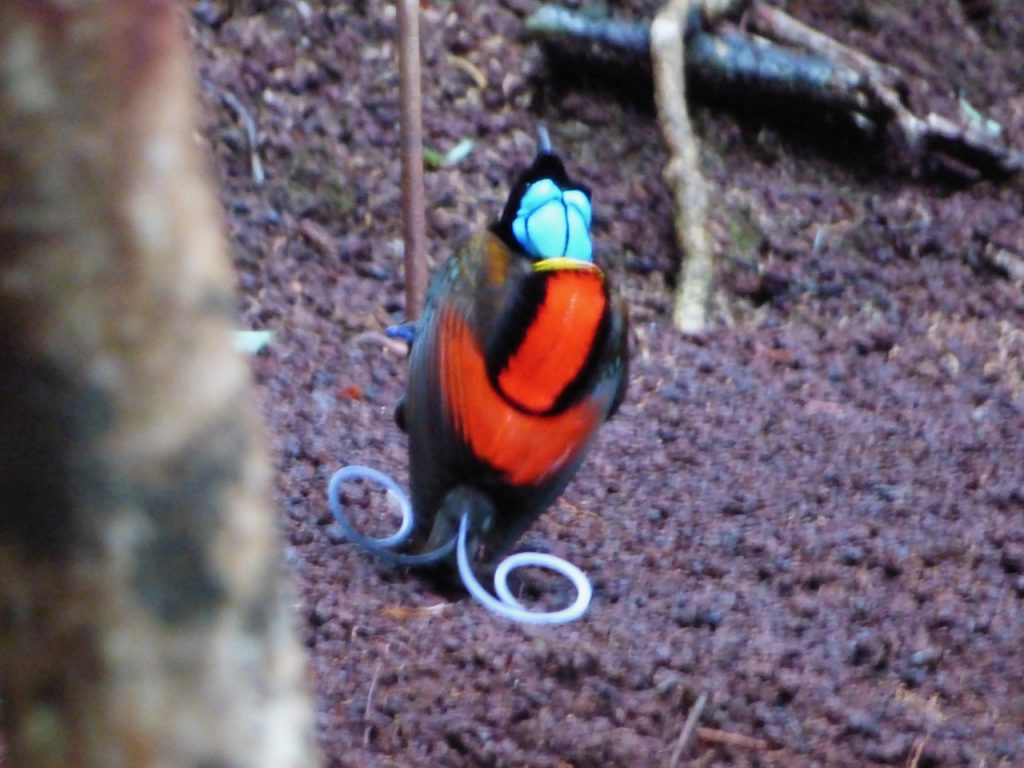 We visited several indigenous villages along the way where we were warmly greeted (with one exception) with welcoming ceremonies and rituals, dancing, singing, smiling and curious children, village tours, “tchotchkes” to buy, and surprisingly good food to eat,
We visited several indigenous villages along the way where we were warmly greeted (with one exception) with welcoming ceremonies and rituals, dancing, singing, smiling and curious children, village tours, “tchotchkes” to buy, and surprisingly good food to eat, 
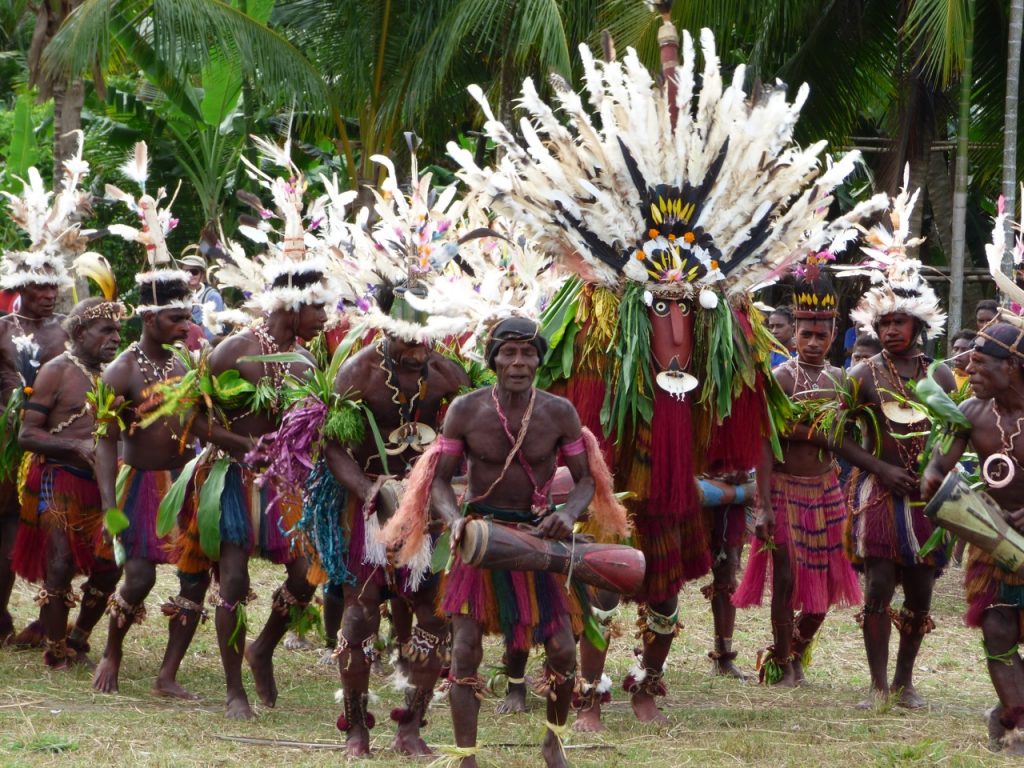

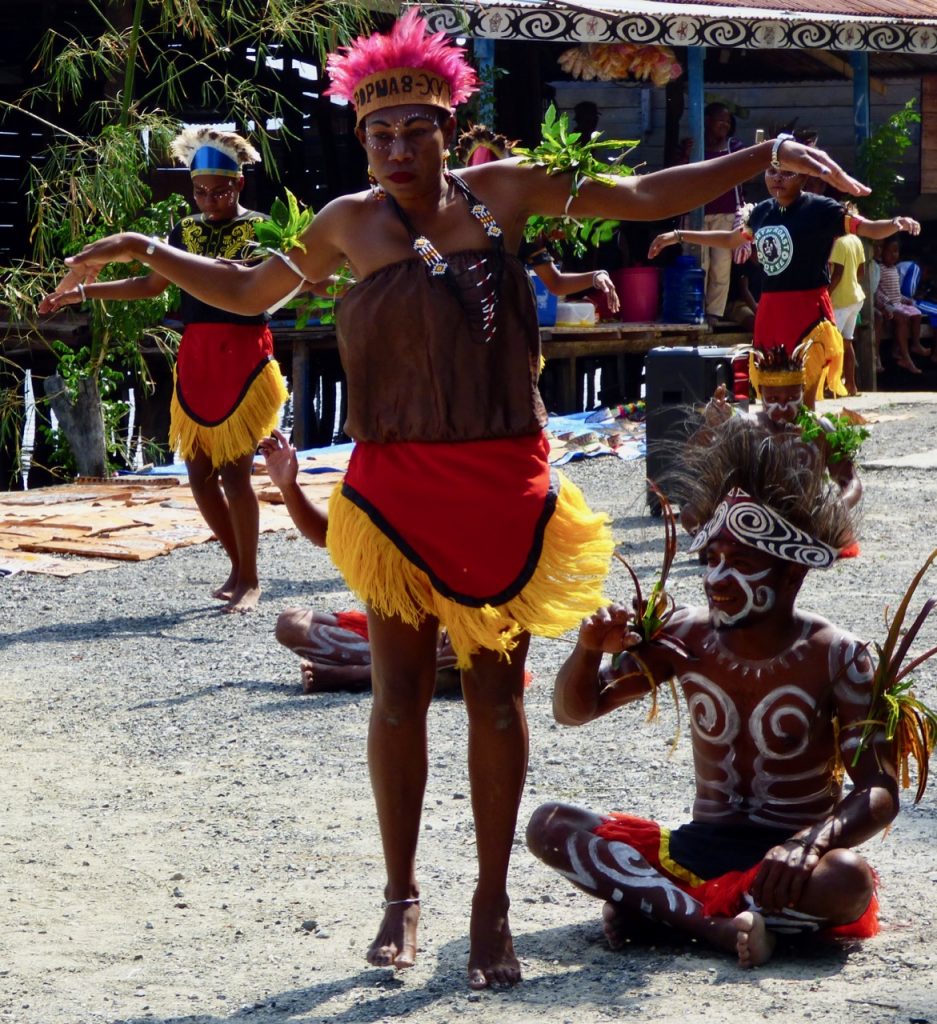
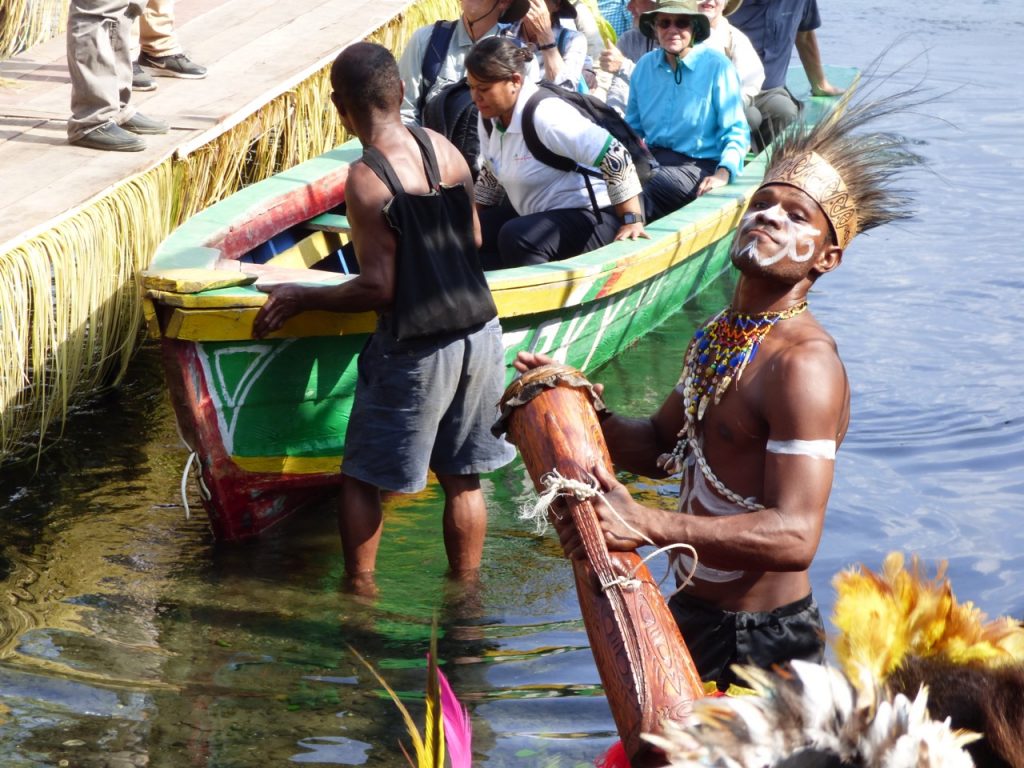
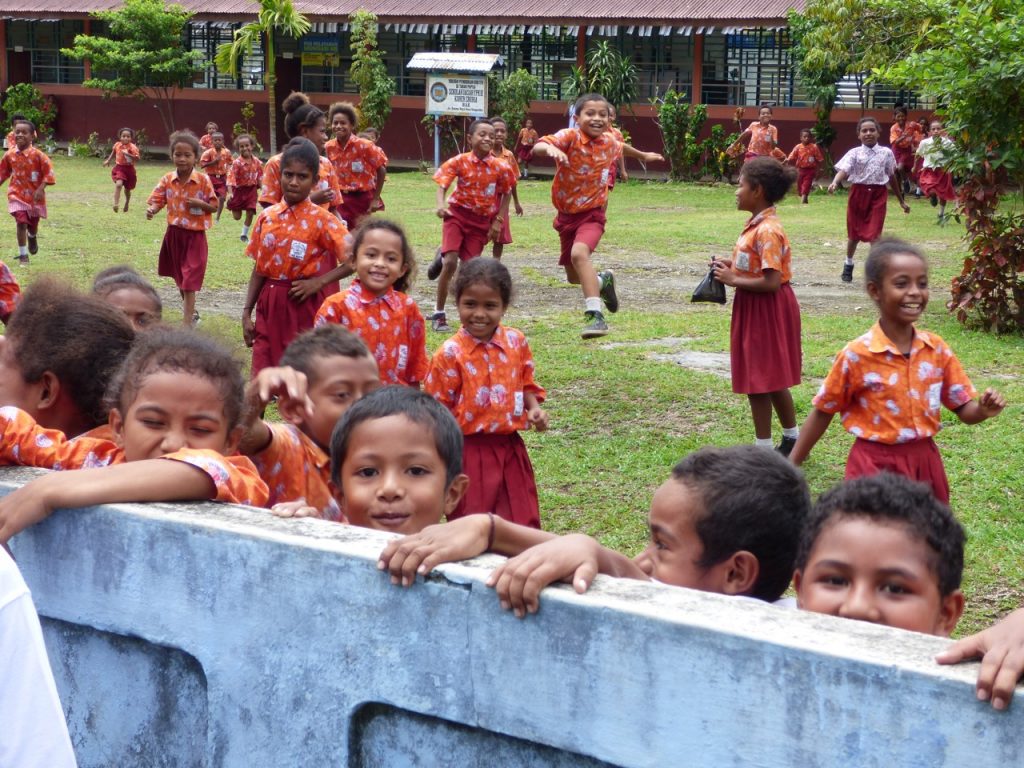
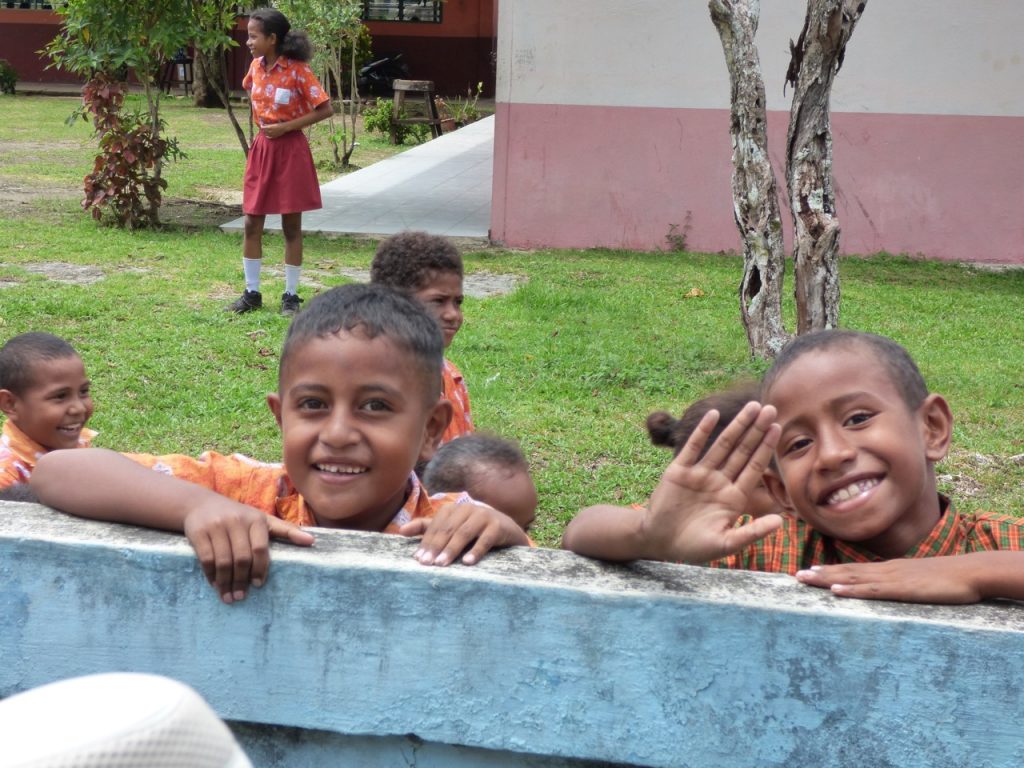

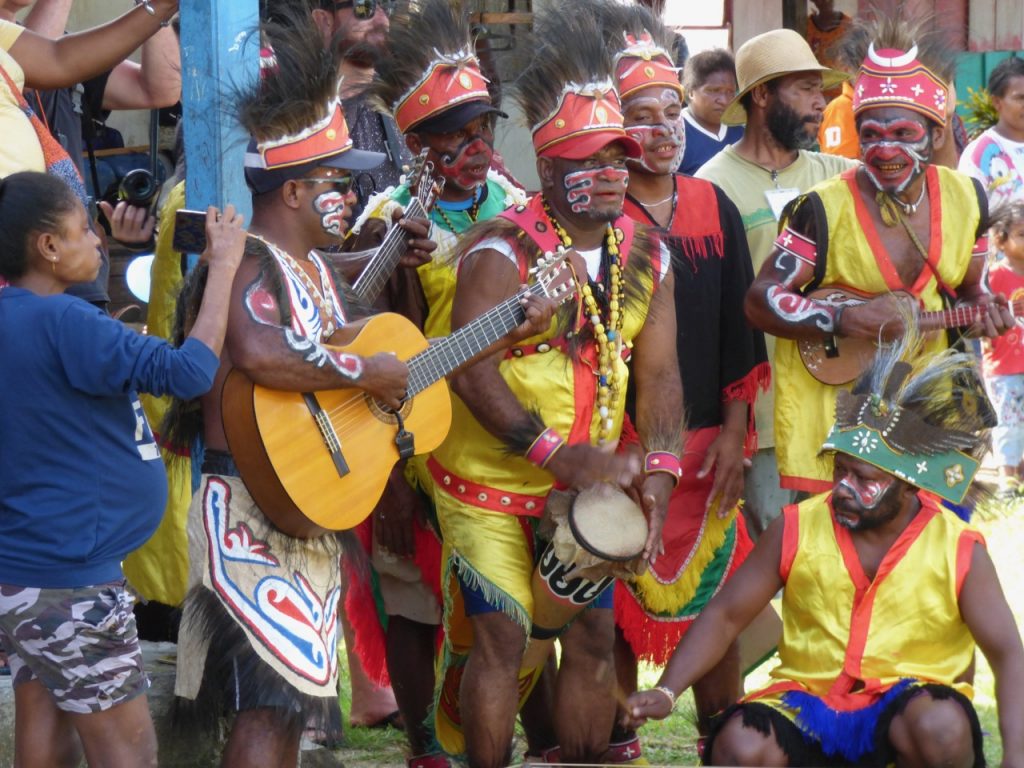
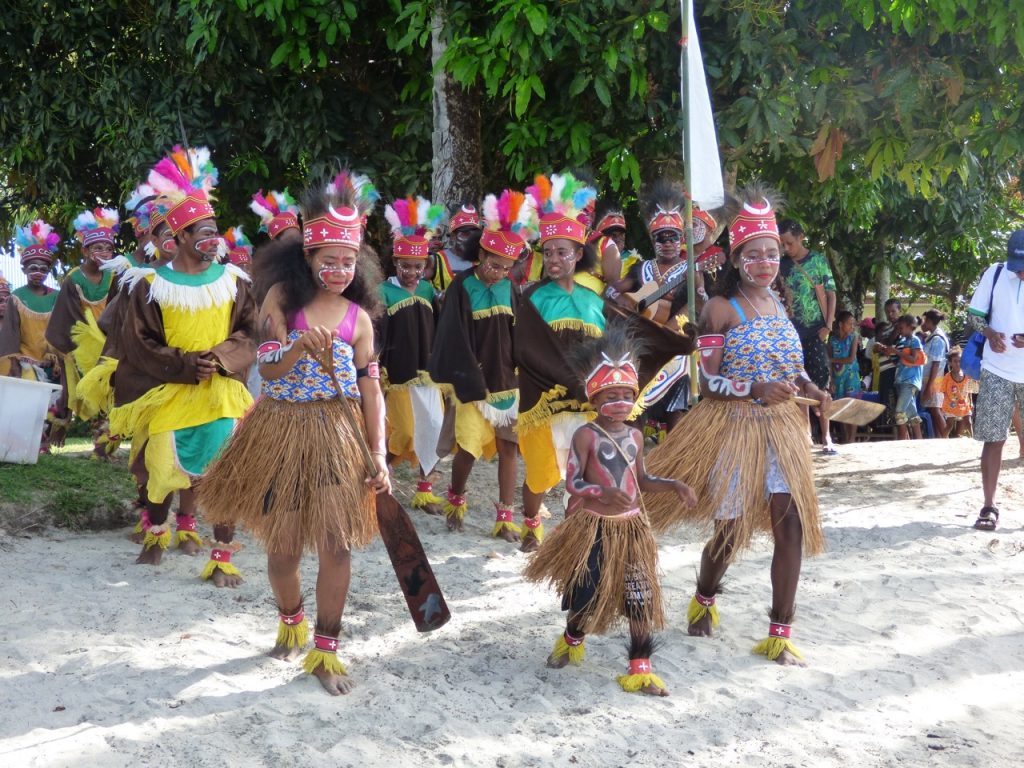 The one exception was a village way up a river — it took us two hours in a Zodiac to get there. They weren’t hostile or anything like that. It just seemed as if they had so little contact with outsiders that they weren’t quite sure what to make of us. Their village was the most rustic and least developed of all.
The one exception was a village way up a river — it took us two hours in a Zodiac to get there. They weren’t hostile or anything like that. It just seemed as if they had so little contact with outsiders that they weren’t quite sure what to make of us. Their village was the most rustic and least developed of all.

 Even their dog seemed wary.
Even their dog seemed wary.
On the way back to the ship I got a good shot of a heron in the distance standing on the mud flats.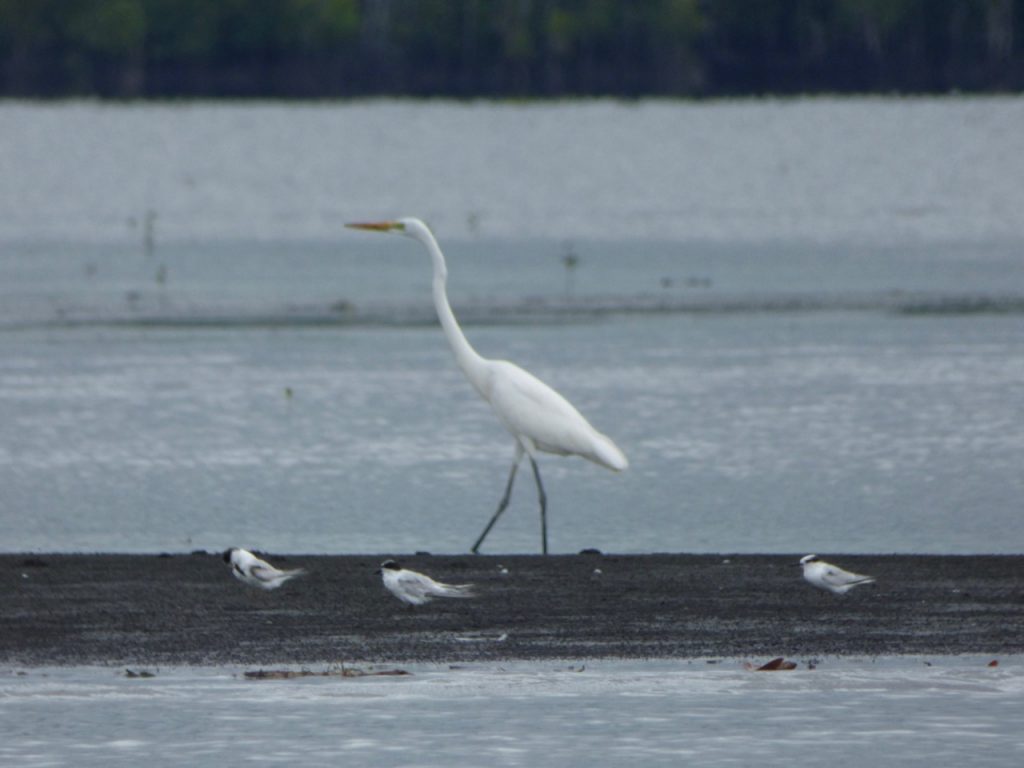 Other highlights included a visit to a local market where we bought fresh fish for the ship, which showed up as great ceviche on the next nights dinner menu.
Other highlights included a visit to a local market where we bought fresh fish for the ship, which showed up as great ceviche on the next nights dinner menu.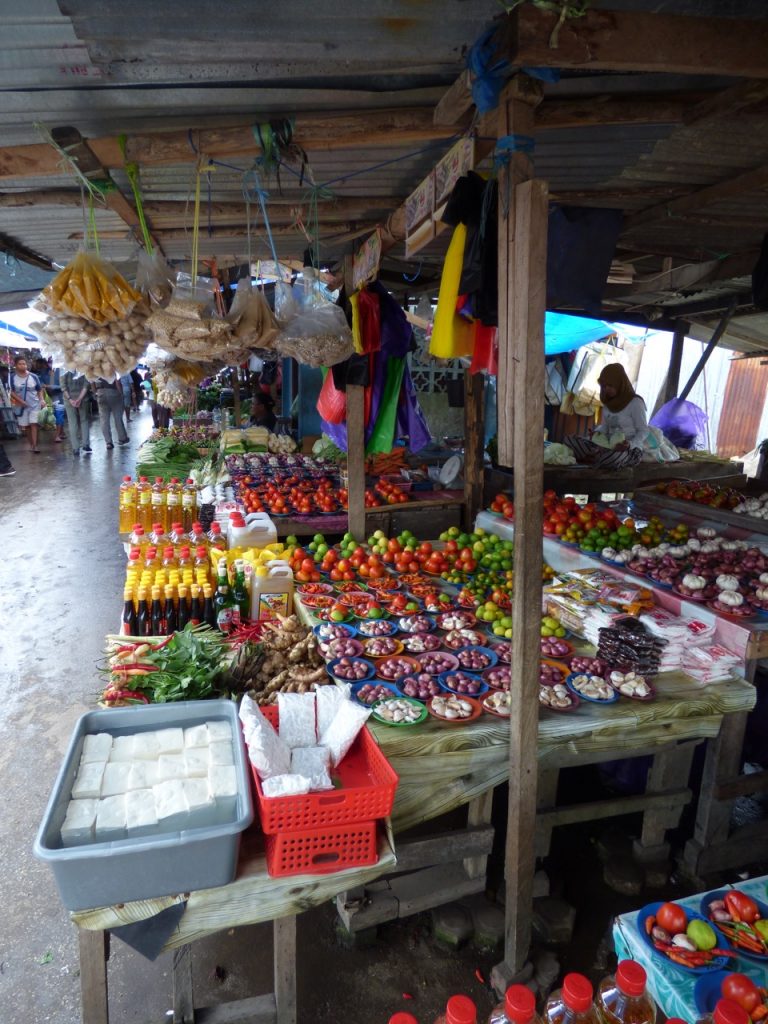

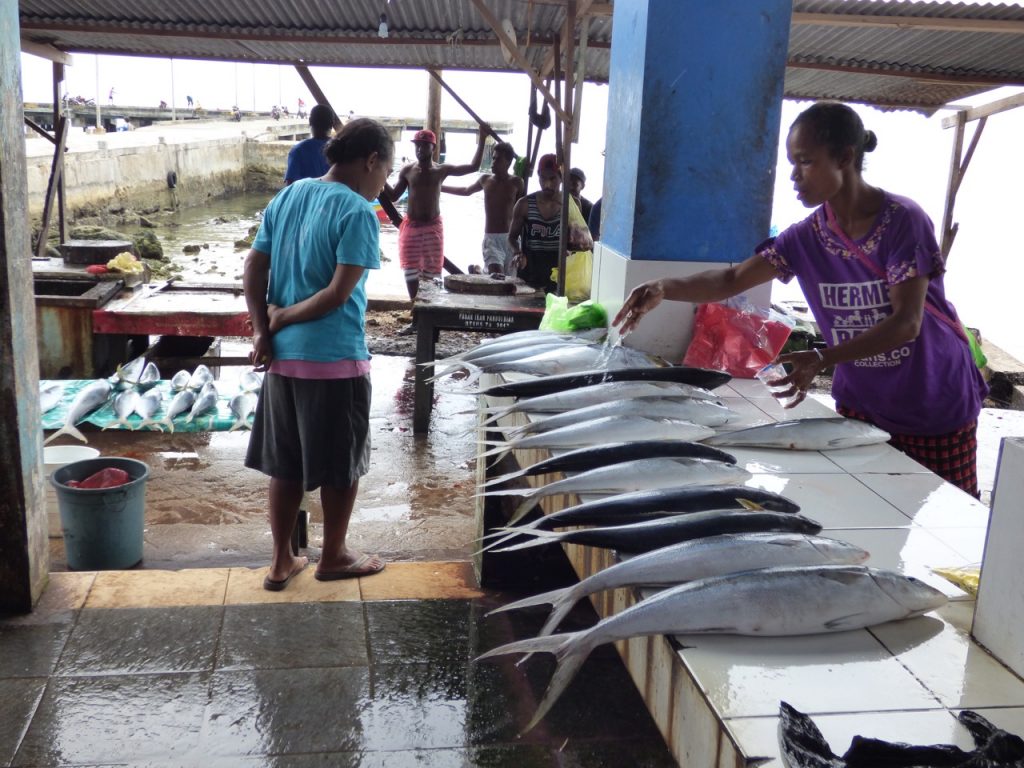
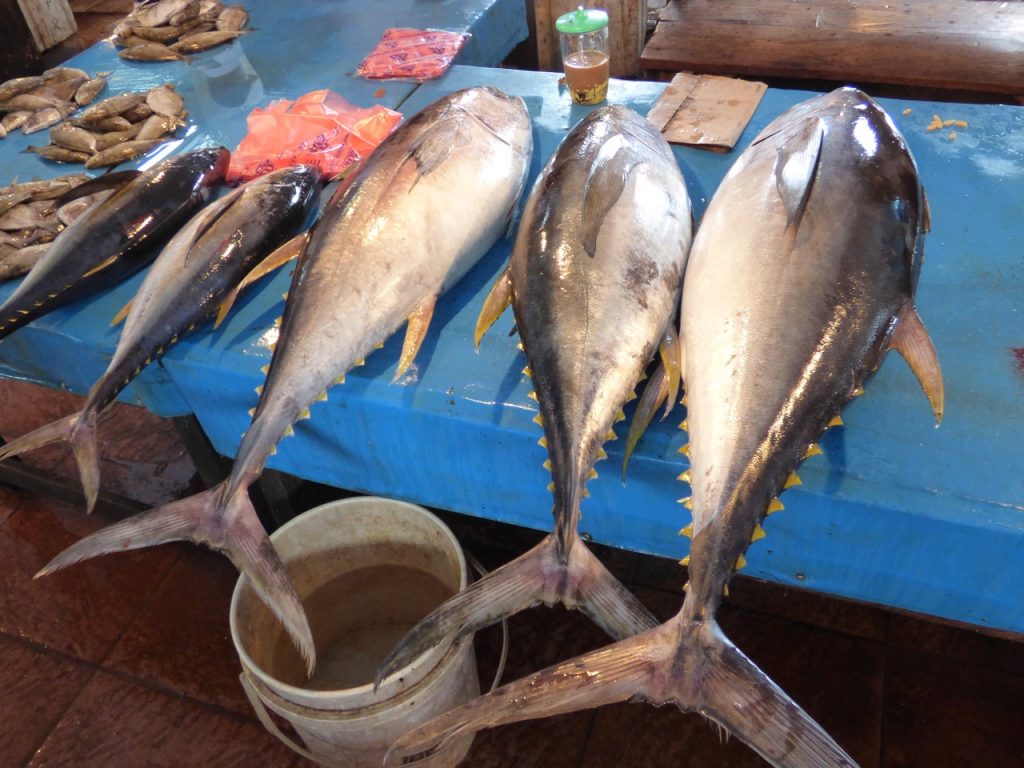
One of the most surprisingly moving experiences was a visit to the Japanese Caves on Biak Island. It’s a pretty grisly story. During WWII the Japanese used the caves to hide from US soldiers, who were trying to take back the island in 1944. They would pop out of the caves to stage raids and attack the US troops, then slip back into them to hide. Apparently they treated the locals badly (e.g., shooting an elderly woman who wouldn’t leave), so the locals ratted them out to the US military. US planes bombed the hell out of them, collapsing part of the cave, then poured gasoline in the caves to get those who survived the bombing. Three thousand Japanese were killed in the attacks.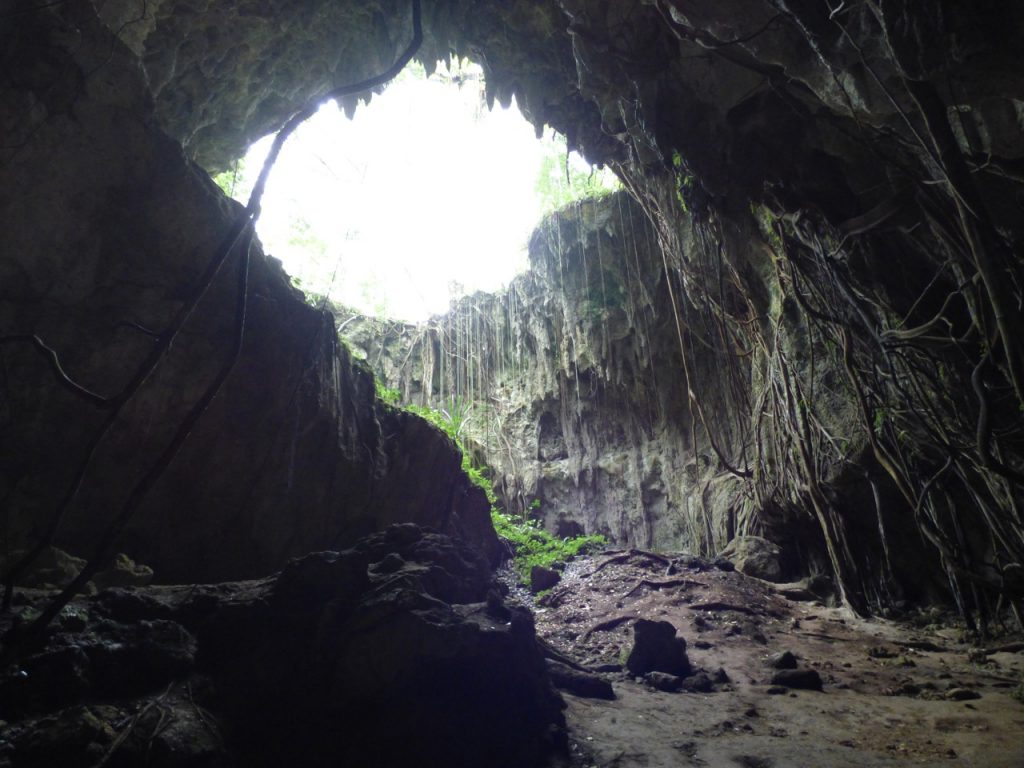
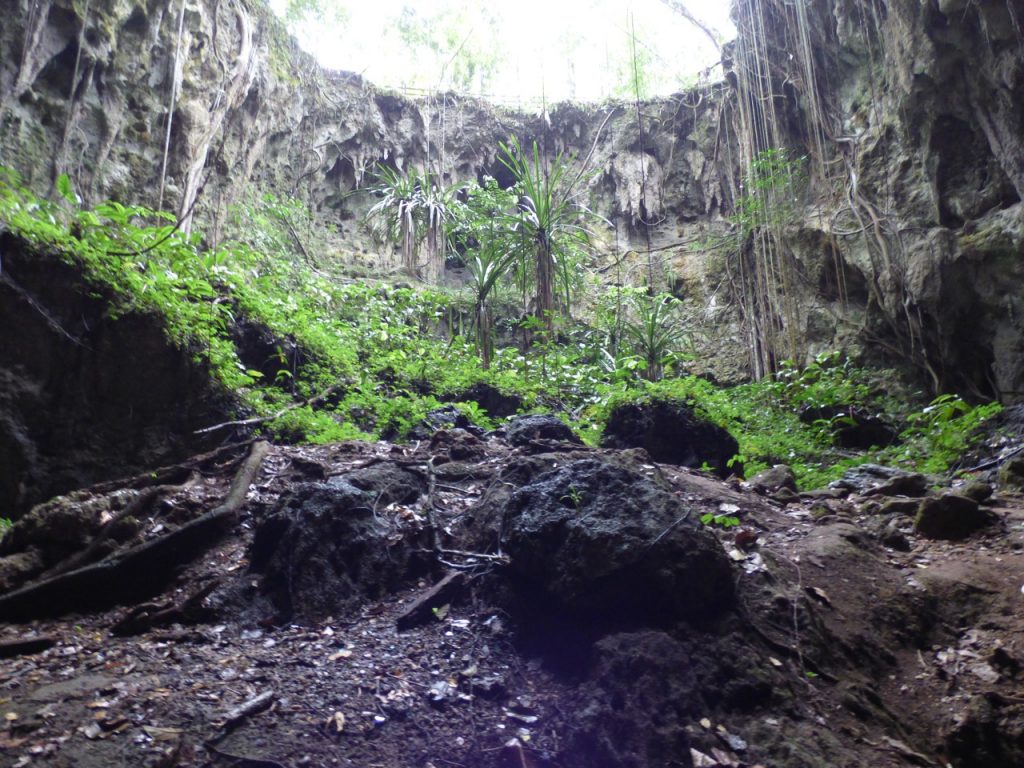
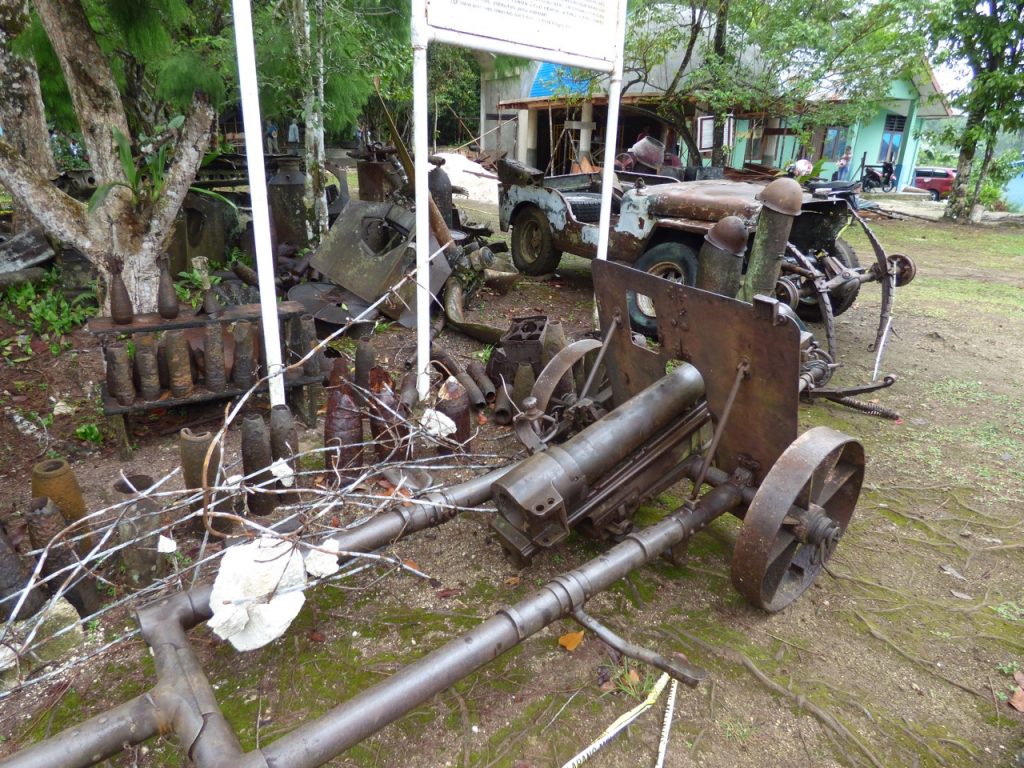
This made me realize how easy it is to forget that this wasn’t a tropical paradise for those who had to fight a war here, both Allied forces and Japanese. It was more like a tropical hell. “Paradise” or “hell;” it’s all about perspective and context. It depends on what you’re doing and what else is going on around you. One person’s paradise may be another person’s hell
This realization was reinforced by current events in the region. The Papuans on the easternmost island of Indonesia, an island shared by Papua New Guinea, are ethnically different than the other Indonesians — they have a separate culture, ethnic origin, religion, language, and they look different, especially their darker skin. They feel discriminated against by the Indonesians, do not have control over their lives, and do not have access to the same economic opportunities. Many would prefer to be politically independent and live in their own country, separate form Indonesia. Their discontent has broken out openly in often deadly public demonstrations and illegal political activity.
We actually got to see the consequences of this conflict on Jayapura on our way to Lake Sentini. A couple of weeks earlier there were widespread outbreaks of civil unrest, and we could see the broken windows and burnt down buildings on the way to the lake. We also heard stories of demonstrators shot by Indonesian police and military. We heard that a significant number of demonstrators were shot, even killed, and there was a large hospital ship in the harbor while we were there to treat the wounded. For the Papuans fighting for independence, their tropical paradise can often feel like hell.
Despite the historical and current signs of bloody conflict, there is no question where I fell on the “hell-paradise” continuum. Any place I can swim with the largest fish in the sea without getting gobbled up is paradise for me.

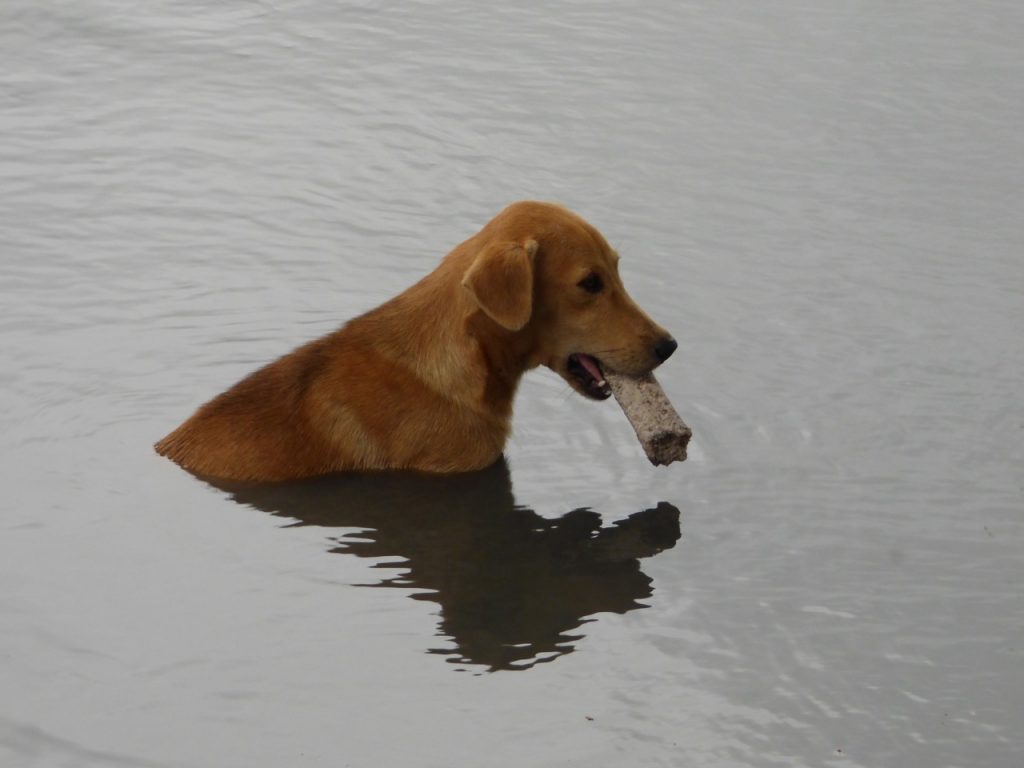
Don! Well Done! I just now read your blog. It is an excellent summary of our incredible trip. I very much enjoyed your company, as well. In fact, this tour was the best I have been on and the company was the best. And, well, wouldn’t it be nice to do it all over again?